
WAREHOUSE AUTOMATION BOOM PREPS COLD FOOD CHAINS FOR ANYTHING AND EVERYTHING
These true problem-solving solutions are in position.
Issue No. 243 March/April 2024 FoodLogistics.com ELECTRIFICATION ROBOTICS & WEARABLES MICRO-FULFILLMENT
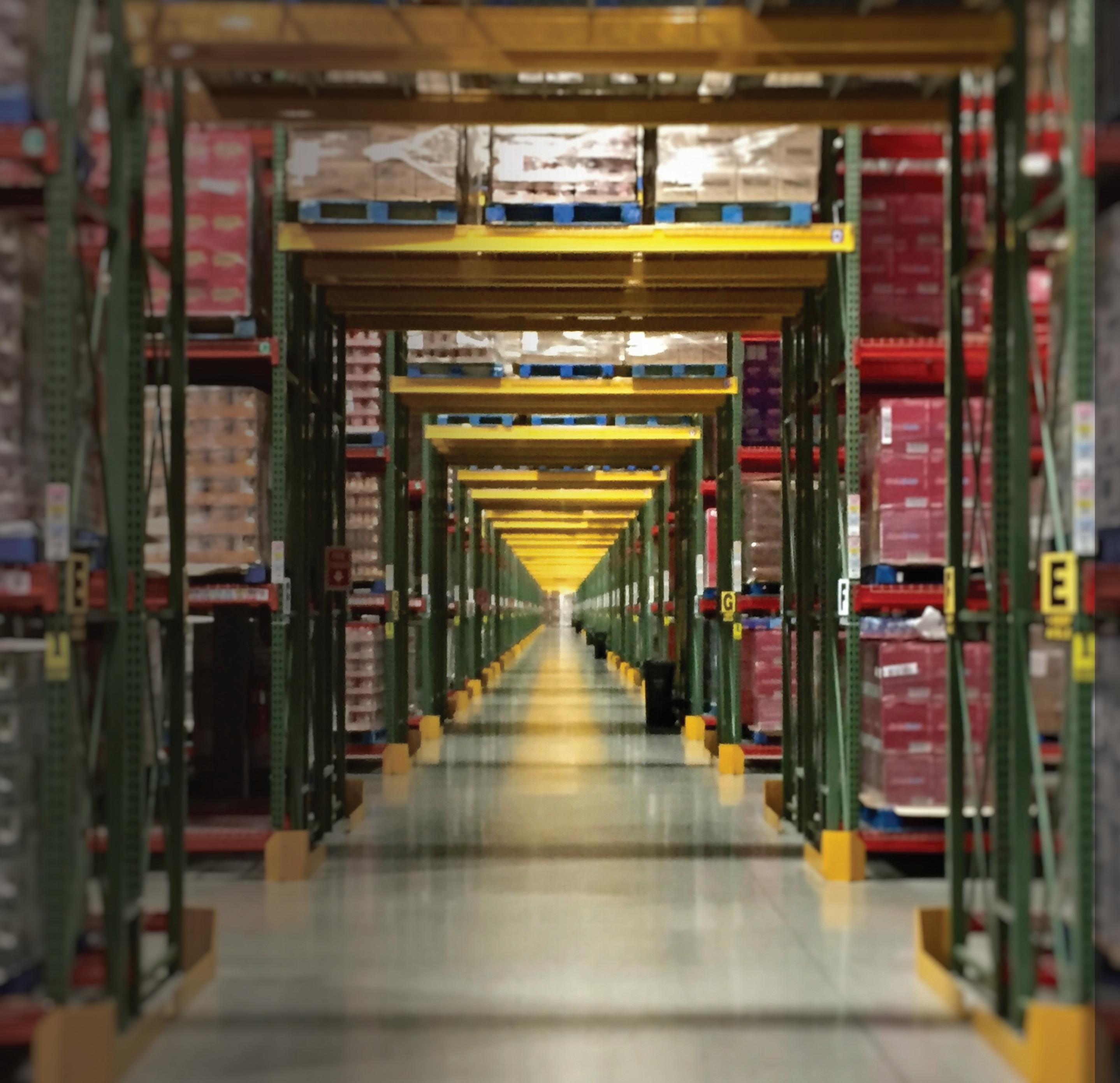
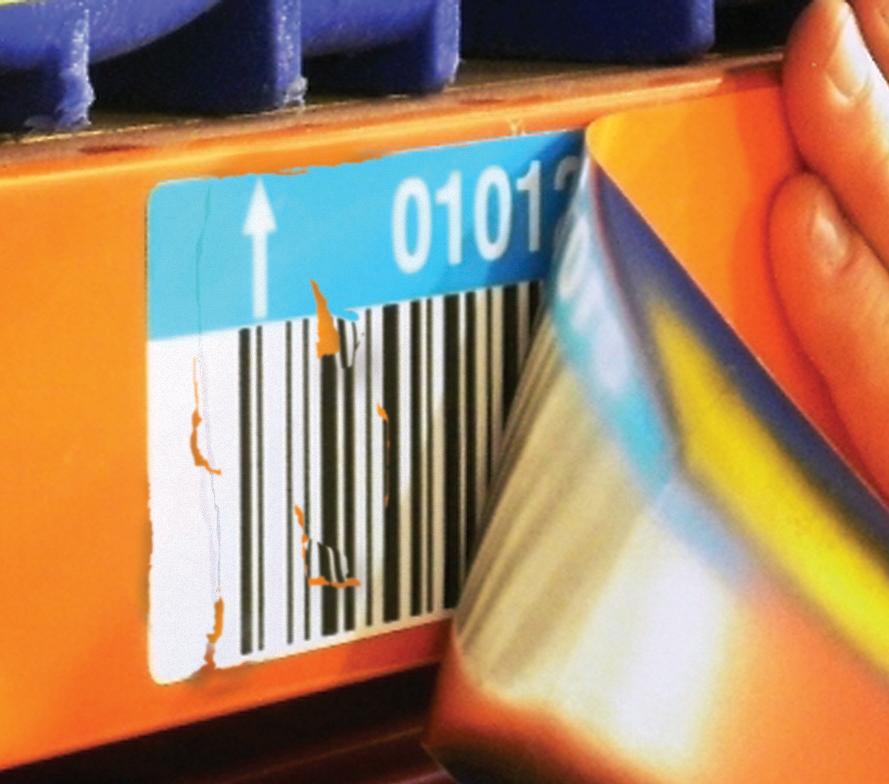
Project Time to Relabel Your Racking? We’ve
ID
new
your
Label’s
and
of
call
survival of
Contact us today to request product
800-541-8506 • info@idlabelinc.com idlabelinc.com When We do The Barcodes, You Can Do More
How to Survive Your Next Relabeling
got you covered with
Label’s advanced labeling solutions. A
WMS, a rack reconfiguration, or simply replacing damaged or missing barcode labels. The reasons to relabel
warehouse locations are numerous. But, let’s face it, no one looks forward to these labor-intensive projects. ID
Clean Release™
Eco Beam Renew™ are two innovative products that help eliminate the time and hassle
relabeling. Our experienced crew can even install your new labels for a turnkey solution. We
that
the smartest.
samples or a quote.
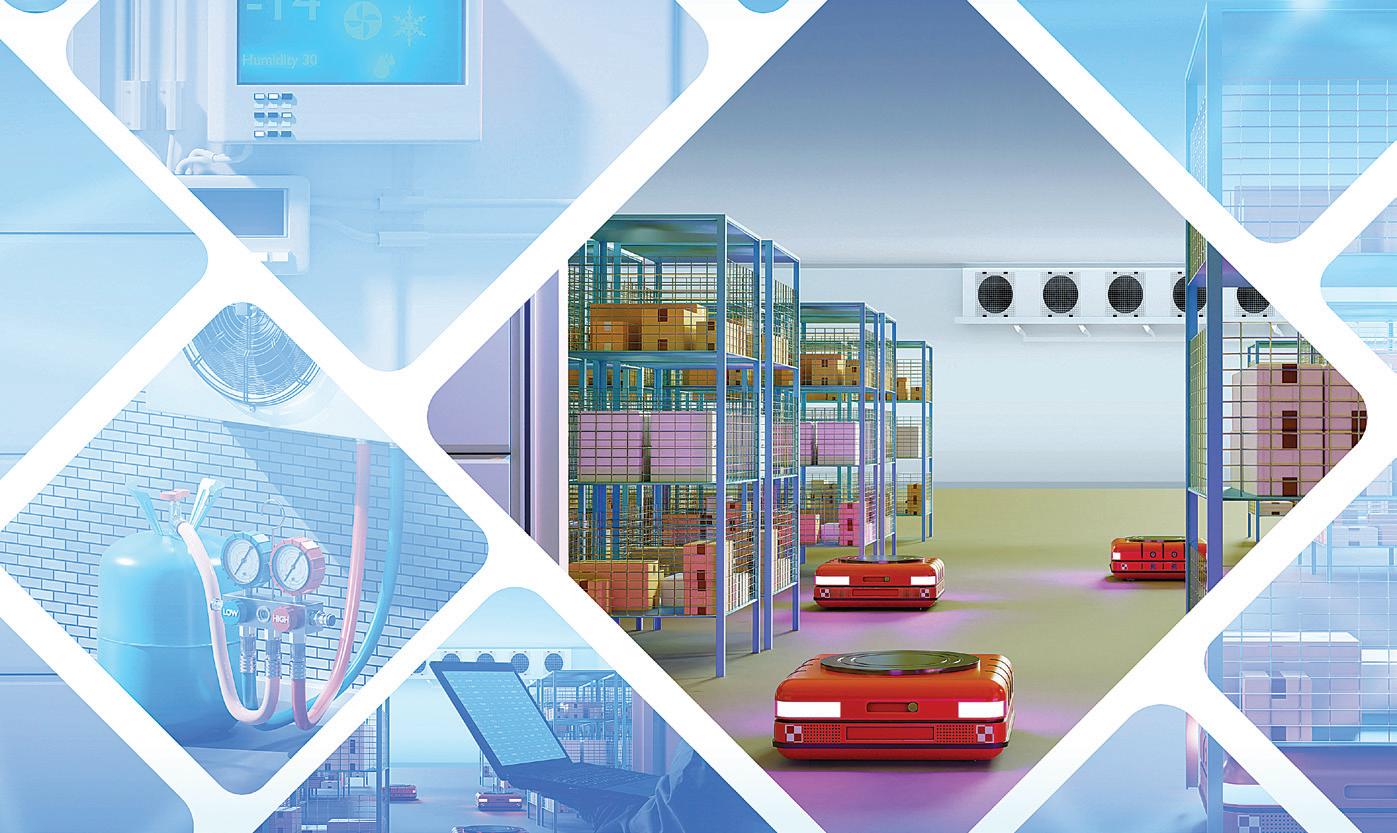






ON THE MENU MARCH/APRIL 2024 ISSUE NO. 243 www.FoodLogistics.com 14 COVER STORY Warehouse Automation Boom Preps Cold Food Chains for Anything These problem-solving solutions are already in position to prep cold food chains for anything and everything. WAREHOUSING The Case for Packaging Sustainability LINC Systems: Companies that promote sustainability will be better positioned. SOFTWARE & TECH How Robotics and Wearables Address Labor Shortages These innovative solutions offer safety, security and longevity. TRANSPORTATION The Role of MediumDuty EV Trucks Motiv Power Systems says all last-mile food deliveries should be made with EVs soon. Here’s why. 32 30 34 TRANSPORTATION Relying on 3PLs in a Flat Market Circle Logistics explains the importance of 3PL services designed to prioritize reliability. 33 3PL/COLD CHAIN Streamlining Transportation Mgmt Strategies Strategies will play a pivotal role in shaping the future of transport management. 22 WAREHOUSING Micro-Fulfillment: From Warehouse to Grocery Store St. Onge Company: How micro-fulfillment operations satisfy demand. 26 WAREHOUSING The Ideal Fulfillment Center is in Back Fabric describes the benefit of leveraging existing space and automated storage and picking. 28 WEB EXCLUSIVES • Premium Content: Insights, Trends, Technology, Best Practices https://www.foodlogistics.com/ premium-content • Women in Supply Chain Forum www. WomeninSupplyChainForum.com • Supply Chain Network Virtual Summit www.SCNSummit.com COLUMNS FOR STARTERS 04 Editor-in-Chief Marina Mayer details why the supply chains of today are up against the clock. DEPARTMENTS 06 Farm To Fork 10 Food on the Move www.foodlogistics.com MARCH/APRIL 2024 | FOOD LOGISTICS 3

When looking at the below picture, do you feel as though you can relate?
Surrounded by an insurmountable stack of tasks, to-dos, directives, goals and plans. And he doesn’t even have a computer.
Or when you stumble across a gif of a cartoon character surrounded by fire saying, “I’m fine. Everything is fine.” Doesn’t it make you chuckle?
Oftentimes in the supply chain, these anxiety-filled sayings are all too familiar, relatable... and true!
That’s because the supply chains of today are up against the clock in a number of ways, whether it’s meeting California’s renewable energy mandates, or FSMA’s updated regulations, or even just being able to conduct business in an orderly fashion.
For starters, the third-party logistics (3PL) landscape experienced a decline in shipments, invoice amount per shipment, and total revenue compared to the previous quarter, according to a new study released by Transportation Intermediaries Association (TIA).
Specifically, total shipments saw a 4.7% quarter-over-quarter decrease and an 8.9% year-overyear decline. Invoice amounts per shipment and total revenue also

faced significant drops, indicating that the fourth quarter was the toughest of 2023.
Data from Container xChange reveals that while there is a surplus of units held up in Russia, capacity in that region remains saturated. This situation has not created enough confidence for significant price drops and has resulted in a cautious approach from both buyers and sellers, leading to a gradual filling up of depots. However, the current depot pressure is not yet strong enough to prompt traders and sellers to lower their price expectations, nor is there significant pressure from buyers to increase their price expectations.
February brought mixed signals for the U.S. freight market, as both new carrier registrations and carrier exits increased, as outlined by Motive’s newly released data. The entrance of new carriers in 2024 reveals a vastly changed landscape compared to 2019. This means, new routes for importing goods into the United States are emerging.
And, the most significant concerns over the next 12 months include trucking capacity exiting the market and container supply chains at risk due to diversions around the Red Sea, according to a report from ITS Logistics.
Yes, supply chain visibility solutions and emerging technologies empower leaders to improve track and trace, instill resiliency and even mitigate risk along the way, it’s the never-ending “fires” that continue to pose additional risk and headache for many of today’s cold food chains.
EDITORIAL
Editor-in-Chief Marina Mayer mmayer@Iron.Markets
Managing Editor Alexis Mizell-Pleasant amizell@Iron.Markets
AUDIENCE ..............................................................................................
Audience Development Manager .............................. Angela Franks
PRODUCTION
Senior Production Manager Cindy Rusch crusch@Iron.Markets
Art Director Flatworld Solutions
ADVERTISING/SALES
Brand Director Jason DeSarle jdesarle@Iron.Markets
Account Executive Brian Hines bhines@Iron.Markets
Account Executive Jay Gagen jgagen@Iron.Markets
Account Executive Mark Pantalone mpantalone@iron.markets
IRONMARKETS .....................................................................................
Chief Executive Officer ....................................................... Ron Spink
Chief Financial Officer JoAnn Breuchel
Chief Revenue Officer Amy Schwandt
Corporate Director of Sales Jason DeSarle
Brand Director, Construction, OEM, IRONPROS Sean Dunphy
VP, Audience Development ........................................ Ronda Hughes
VP, Operations & IT ......................................................... Nick Raether
Content Director Marina Mayer
Director, Online & Marketing Services Bethany Chambers
Director, Demand Generation & Education Jim Bagan
Director, Event Content & Programming Jess Lombardo
CIRCULATION & SUBSCRIPTIONS
P.O. Box 3605, Northbrook, IL 60065-3605 (877) 201-3915 | Fax: (847)-291-4816
circ.FoodLogistics@omeda.com
LIST RENTAL
Sr. Account Manager Bart Piccirillo | Data Axle (518) 339 4511 | bart.piccirillo@infogroup.com
4 FOOD LOGISTICS | MARCH/APRIL 2024 www.foodlogistics.com FOR STARTERS BY MARINA MAYER, EDITOR-IN-CHIEF mmayer@iron.markets WWW.FOODLOGISTICS.COM Published by IRONMARKETS 201 N. Main Street, Fort Atkinson, WI 53538 (800) 538-5544 • WWW.IRON.MARKETS @
@FOODLOGISTICS @FOODLOGISTICS @FOODLOGISTICS
FOOD-LOGISTICS-MAGAZINE
REPRINT SERVICES Brian Hines (647) 296-5014 | bhines@Iron.Markets Published and copyrighted 2024 by IRONMARKETS. All rights reserved. No part of this publication may be reproduced or transmitted in any form or by any means, electronic or mechanical, including photocopy, recording or any information storage or retrieval system, without written permission from the publisher. Food Logistics (USPS 015-667; ISSN 1094-7450 print; ISSN 1930-7527 online) is published 5 times per year in March/April, May/June, July/August, September/October, and November/December by IRONMARKETS, 201 N. Main Street, Fort Atkinson, WI 53538. Periodicals postage paid at Fort Atkinson, WI 53538 and additional mailing offices. POSTMASTER: Send address changes to Food Logistics, P.O. Box 3605, Northbrook, IL 60065-3605. Subscriptions: U.S., one year, $45; two years, $85; Canada & Mexico, one year, $65; two years, $120; international, one year, $95; two years, $180. All subscriptions must be paid in U.S. funds, drawn from a U.S. bank. Printed in the USA. I’M FINE. EVERYTHING IS
FINE.
@carballo.stock.adobe.com




















ESG-Related Risks for Disruption
While supply chain impacts from the COVID-19 pandemic moved into the rearview mirror in 2023, data in Sphera’s inaugural Supply Chain Risk Report shows that supply chains were vulnerable to a broad range of other risks— inflation, rising interest rates, natural hazard events and ESG-related risks such as human rights violations and labor practices among them.
Data also shows that ESG-related risks in supply chains continued to rise in 2023. Human rights notifications increased 12%, labor practice issues rose 13% and ESGrelated issues related to violations of environmental practices went up 1%. Increased globalization, regulatory changes and consumer and investor demands can all contribute to the greater prominence of ESG risk in supply chains.
Scan the QR code to learn more https://foodl.me/b8vxqkqa
Government Bolsters
Port Cybersecurity
The Biden-Harris Administration will issue an Executive Order to bolster the security of the nation’s ports, strengthen maritime cybersecurity, fortify supply chains and strengthen the U.S. industrial base.

Expanding E-Commerce Tech for Farm-to-Fork
POS Nation acquired GrazeCart , an e-commerce technology solution built specifically for farmers.
“GrazeCart’s all-in-one technology solution has been a revolutionary tool for food suppliers for over seven years,” says Cort Ouzts, president of POS Nation. “We’re excited to help them expand their footprint and sales to the farm-to-fork suppliers who want to sell to their consumers directly.”
Scan the QR code to learn more https://foodl.me/xl6v6gni

This involves the Administration’s intent to bring domestic onshore manufacturing capacity back to America to provide safe, secure cranes to U.S. ports. The Executive Order aims to bolster the Department of Homeland Security’s authority to directly address maritime cyberthreats, including through cybersecurity standards to ensure that U.S. ports’ networks and systems are secure. Now, the U.S. Coast Guard will have the express authority to respond to malicious cyber activity in the nation’s Marine Transportation System by requiring vessels and waterfront facilities to mitigate cyber conditions that may endanger the safety of a vessel, facility or harbor.
Scan the QR code to learn more https://foodl.me/o21eyosf
FARM TO FORK NEWS FROM ACROSS THE FOOD SUPPLY CHAIN Daily Updates at FoodLogistics.com 6 FOOD LOGISTICS | MARCH/APRIL 2024 www.foodlogistics.com
@aprilian.stock.adobe.com @smartfuture.stock.adobe.com @KanawatTH.stock.adobe.com

SCN Summit Explores Trending Topics
Food Logistics and Supply & Demand Chain Executive present SCN Summit: State of the Supply Chain, where industry experts and thought leaders talk trends and technologies in the supply chain space and how they relate to the State of Today’s Supply Chains. Topics revolve around Warehouse Automation, Generative AI, Automation, Electrification and Company Culture. Join us live June 4-6 for enlightening sessions on these topics and more!
Scan the QR code to learn more https://foodl.me/bz5mx7x4
Smart Farming with Wireless Charging Plants
The future of farming is electric, and wireless charging is lighting the way. The agriculture industry is undergoing a renaissance, with Internet of Things (IoT) technology transforming traditional practices into a more connected, sustainable future. In 2022 alone, the global IoT market for the agriculture sector surged to $12.5 billion , and is projected to bloom to more than $70 billion in the next 10 years.

Predictions for Hurricane Season in 2024
While the Atlantic hurricane season does not officially start until June 1, there are already “serious and growing concerns” about the impending season, according to AccuWeather chief meteorologist Jonathan Porter.
“The current El Niño pattern that is in place is forecast to transition into a La Niña pattern during the second half of the hurricane season,” Porter says. “Any storms that do form will have the potential to rapidly strengthen, even close to land, due to the exceptionally warm waters.” Scan the QR code to learn more https://foodl.me/st5tydfk

For this technology to take root—especially when it involves thousands of internet-connected devices in a single field— Giampaolo Marino, VP of business development and marketing at Energous details how wireless charging offers a viable solution.
Scan the QR code to learn more https://foodl.me/fikbk1fs
FARM TO FORK NEWS FROM ACROSS THE FOOD SUPPLY CHAIN Daily Updates at FoodLogistics.com www.foodlogistics.com MARCH/APRIL 2024 | FOOD LOGISTICS 7
@generativeart.stock.adobe.com @Jsirlin.stock.adobe.com @dmitry.stock.adobe.com
Application Simplifies Fresh Item Replenishment
RELEX Solutions introduced RELEX Mobile Pro, an advanced AI-driven in-store execution application for retailers, suppliers, wholesalers, and manufacturers to consolidate their many in-store tools and processes.
RELEX Mobile Pro, combined with the RELEX fresh item replenishment capabilities, uses AI/machine learning to address challenges like understanding store inventory levels, customer purchasing patterns for date-sensitive products, and prioritizing tasks to provide a better customer experience. It also helps optimize stock management by ensuring products are stocked correctly, reducing spoilage and out-of-stocks, boosting sales, and improving store labor efficiency.

Scan the QR code to learn more https://foodl.me/w35k6m8t

Carbon Tracking Tool Supports ESG Initiatives
Banyan Technology’s new CarbonTRAX & Offset feature in Banyan’s LIVE Connect software tracks the estimated carbon impact of any shipment using GLEC-compliant and Smart Freight Centre-certified calculations. CarbonTRAX also allows clients and client customers to purchase credits from a variety of vetted climate action projects worldwide to offset the carbon impact of each shipment.
Scan the QR code to learn more https://foodl.me/5egp9z3t
FARM TO FORK NEWS FROM ACROSS THE FOOD SUPPLY CHAIN Daily Updates at FoodLogistics.com 8 FOOD LOGISTICS | MARCH/APRIL 2024 www.foodlogistics.com
@STUDIO.0432.stock.adobe.com @Deemerwha studio.stock.adobe.com
The Future Outlook of Last-Mile in Grocery
Last-mile delivery has taken on a full revolution since the height of COVID-19. Innovation in ordering, shipping and delivery has proven to improve abilities that meet the everchanging expectations of consumers. Today, optimization technology, delivery options and software are growing and holding firm as pivotal pieces in the last mile of grocery.

When it comes to grocery access, there’s always been expectations for growth from consumers but with the technology of 2024, expectations are becoming a reality. Researching, utilizing and expanding tech in last-mile grocery delivery shows increases in visibility and optimization practices moving forward.
Scan the QR Code to access the full infographic
https://foodl.me/9sgnn1ep

COMPACT SHUTTLE STORE YOUR GROCERIES EFFICIENTLY

Loads up to 3,300 lbs
Power Caps for energy efficiency
Fast raising and lowering time
Maximize your storage space with multi-deep pallet storage in high-bay warehouses. The well-coordinated dynamic duo of shuttle and stacker crane forms a logistical unit for your automated warehouse operations. Ensure efficient storage of an ever-expanding range of fresh and frozen products. Find out more: www.dambach-lagersysteme.com
FARM TO FORK NEWS FROM ACROSS THE FOOD SUPPLY CHAIN Daily Updates at FoodLogistics.com www.foodlogistics.com MARCH/APRIL 2024 | FOOD LOGISTICS 9
A GLANCE
AT

Touchless Appointment Technology
C.H. Robinson developed new technology that removes the work of scheduling an appointment at the place a load needs to be picked up and scheduling another appointment where the load needs to be delivered.
With touchless appointments, the entire process is automated and can be done 24/7 with no manual intervention. The technology also uses AI to determine the optimal appointment, facility data such as peak dwell time, and the most convenient time windows for carriers.
Scan the QR code to learn more https://foodl.me/8tke3hnv
Voice Assistant for Trucking Communications
Ten5, Inc. announced what is said to be an industry-first hands-free voice assistant and communications service for trucking operations.

Rail Operations Will Become Critical Concern
The latest US Port/Rail Ramp Freight Index from ITS Logistics reveals a concern as to whether trucking, chassis, and container storage capacity will be able to effectively handle expected volumes. The cautionary response is due to a decrease in numerous assets due to avoidance of West Coast ports around post-COVID congestion concerns and labor unrest in 2023. Shippers and BCOs should also be on the alert as rates and capacity availability are projected to become extremely volatile.
Scan the QR code to learn more
https://foodl.me/l83atfe8

“We’ve created a platform [that] simultaneously addresses some of the trucking industry’s most pressing issues, including driver retention and truck safety,” says Ten5 CEO Drew Ryder. “By giving drivers a safe, low-friction way to communicate, we give them more control of their time and schedule and a greater opportunity to voice concerns. Driver surveys have repeatedly concluded that driver turnover has a lot to do with a breakdown in communication and a lack of respect for the driver’s time.”
Scan the QR code to learn more https://foodl.me/kxcgmys0
FOOD ON THE MOVE LOGISTICS TRENDS IN THE INDUSTRY Daily Updates at FoodLogistics.com 10 FOOD LOGISTICS | MARCH/APRIL 2024 www.foodlogistics.com
@everythingpossible.stock.adobe.com
@Joaquin Corbalan.stock.adobe.com @vit.stock.adobe.com

Food Supply Chain Thefts Experience Uptick
Food continues to be the commodity most at risk of theft in the global supply chain and now accounts for one-third of all hijacking incidents, up 29% in 2022, according to new data from BSI.
The analysis finds that food and beverage items now represent 22% of all thefts (up from 17% in 2022 and 14% in 2021). Theft of agricultural food products has also risen to 10% and now accounts for one in 10 hijacking incidents.
Scan the QR code to learn more
https://foodl.me/irug39wq
Spot Market Challenges
Nearing the End
According to the latest Bloomberg | Truckstop survey, most respondents believe that current demand has reached its bottom.
Demand remained pressured in 4Q as 68% of respondents noted lower volume and 23% reported loads were flat. Most respondents believe that current demand has reached its low point, with 40% predicting flat volume over the next 3-6 months, 10 percentage points higher than in the 3Q survey.

Improving Risk Management for Fleets
Supply chain organizations play a large role in the transport of critical goods. Those prioritizing safety and risk management through data analytics, telematics, and newer equipment position themselves as competitive leaders. Hadley Benton, EVP of business development at Fleet Advantage, says this approach fosters stronger communication between finance teams, risk management, and the C-level, ensuring resilience and competitiveness in the dynamic supply chain industry.
Scan the QR code to learn more
https://foodl.me/i0hz8032
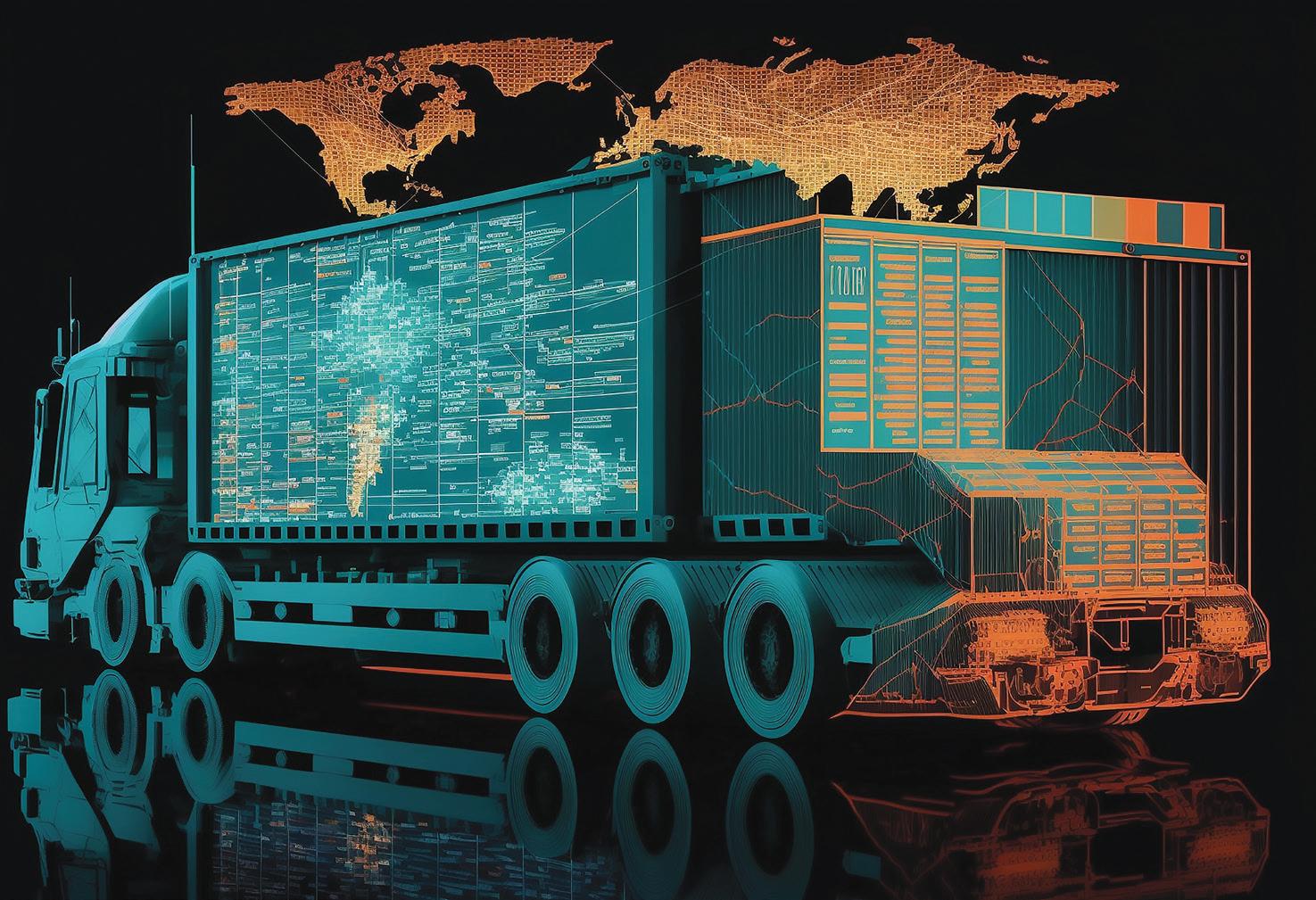
Most carriers also believe that spot rates excluding fuel surcharges are bouncing along a bottom, with an average 14% drop for respondents in 4Q. Such rates likely will remain flat in the next 3-6 months, according to 46% of respondents, while 32% anticipate declines and 22% expect improvement.
Scan the QR code to learn more
https://foodl.me/q34sknbg
FOOD ON THE MOVE LOGISTICS TRENDS IN THE INDUSTRY Daily Updates at FoodLogistics.com www.foodlogistics.com MARCH/APRIL 2024 | FOOD LOGISTICS 11
@ipopba.stock.adobe.com @Aryan.stock.adobe.com @sikov.stock.adobe.com

Technology & Communication for Visibility
Technology is a tool that provides large amounts of data, but it’s easy to get overwhelmed. That is why it is important to have someone who can understand and analyze the data to determine what is important and what needs to be communicated to the customer. Then the customer can be informed of the problem but also be reassured that a plan is already in place to rectify the situation. Combining technology and communication ensures the safe, efficient delivery of the nation’s food supply, says Jim Anderson, divisional VP, Mid-Atlantic Region, Lily Transportation LLC.
Scan the QR code to learn more https://foodl.me/r8h76lal

Red Sea Attacks Drive Up Transportation Costs
The GEP Global Supply Chain Volatility Index rose to -0.12 in January from -0.44 in December, its highest level since last April, indicating that spare capacity across global supply chains has shrunk notably.
The most noteworthy impact from the Red Sea disruption was to transportation costs, which rose to a 15-month high in January, as commercial ships took the lengthier route around the Cape of Good Hope. There was also a slight pickup in safety stockpiling, with reports from businesses of inventory building due to supply or price fears at the highest since last June. That said, they were well below the levels seen in 2021-2022 during the post-pandemic supply crunch.
Scan the QR code to learn more https://foodl.me/st5tydfk @sashkin.stock.adobe.com
FOOD ON THE MOVE LOGISTICS TRENDS IN THE INDUSTRY Daily Updates at FoodLogistics.com 12 FOOD LOGISTICS | MARCH/APRIL 2024 www.foodlogistics.com
@BotTastic.stock.adobe.com
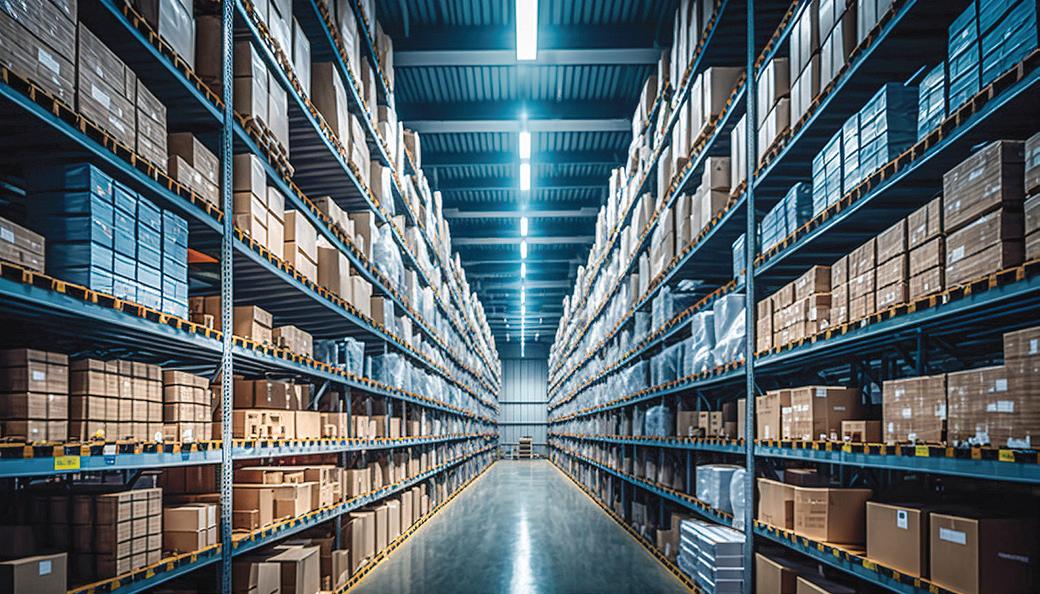

Chris Copenhaver, co-lead
Scan the QR code to learn more https://foodl.me/pidoam40

Full
Scan the QR code to learn more https://foodl.me/2l2ywyjd


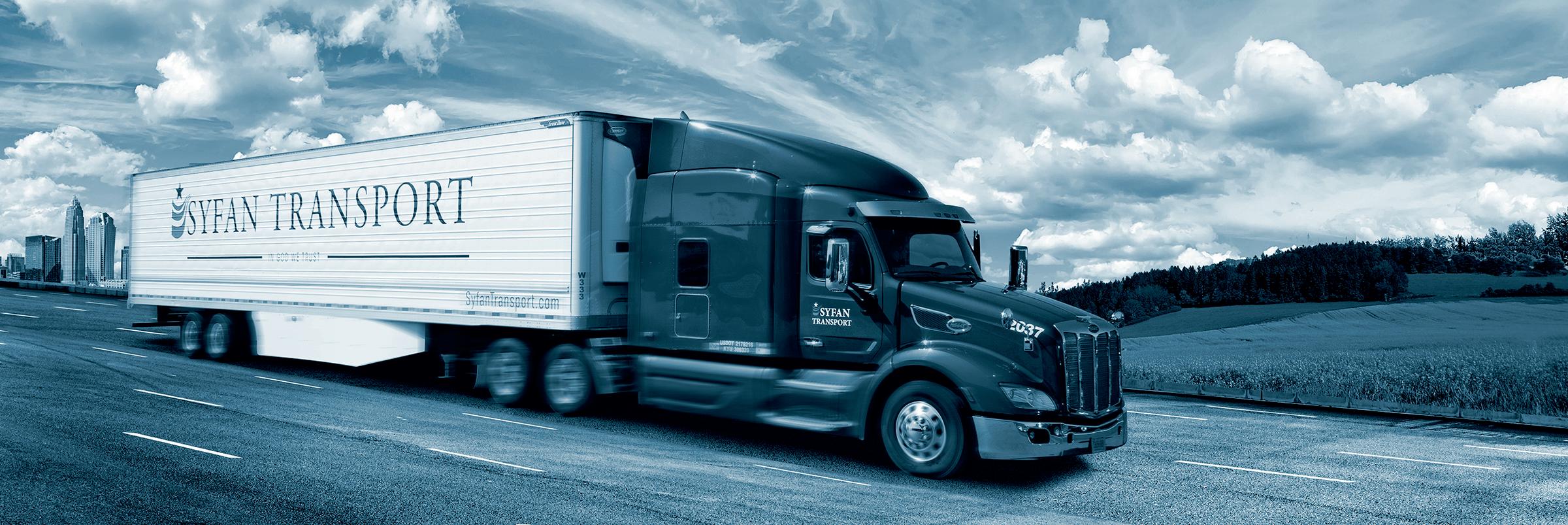
FOOD ON THE MOVE LOGISTICS TRENDS IN THE INDUSTRY Daily Updates at FoodLogistics.com www.foodlogistics.com HOW. Discover why the food industry has relied on Syfan for decades. Experience that ships confidence. Let’s get your product moving. FOOD COMMODITIES WE PROMISE, WE DELIVER. PORT DRAYAGE | FULL TRUCKLOAD LESS THAN TRUCKLOAD | FLAT BEDS EXPEDITED | TEMP CONT | POWER ONLY YARD MGMT SUPPORT | LOGISTICS 855.287.8485 THIS IS FRESH. YOUR SHIPMENT DELIVERED SyfanLogistics.com Demand Heats Up as Inventory Freezes Occupiers and investors alike should start to plan at least two years ahead and leverage the expertise of commercial real estate brokers whose deep knowledge and insights of local and national real estate markets can save time in helping to identify potential sites and availability.
for
&
with the ongoing evolution
increasing
and scarcity of inventory, the cold storage
must remain agile and responsive
demands.
Cushman
Wakefield’s Food & Beverage Practice Group, explains that
of e-commerce,
demand,
real estate sector
to future market
Cost of Electrifying U.S. Commercial Truck Fleet to Reach $1T
electrification of the U.S. commercial truck fleet would require nearly $1 trillion in infrastructure investment alone, according
infrastructure buildout
the electrification
medium-
heavy-duty commercial vehicles, exposing what
a massive investment gap
and federal
mandate increased adoption rates of battery-electric
expenditure
trucks,
more
to
to a new report released by the Clean Freight Coalition. The study forecasts a realistic
for
of
and
the CFC calls
as state
policymakers
commercial vehicles. This nearly $1 trillion
does not account for the cost of new battery-electric
which according to market research can be 2-3 times
expensive. And, utilities would need to invest $370 billion
upgrade their grid networks to meet the demands of just commercial vehicles.
@BPawesome.stock.adobe.com @scharfsinn86.stock.adobe.com


WAREHOUSE AUTOMATION BOOM PREPS COLD FOOD CHAINS FOR ANYTHING AND EVERYTHING
When it comes to warehouse automation, one thing is for certain: there is no one-size-fitsall. That’s because warehouse automation means something different to every company. To some, it can translate to the robotics placed throughout a manufacturing line, while others may liken it to a warehouse management system or other software full of track-and-trace alerts.
Some may even consider it to be the emerging technologies situated along the perimeter of a facility, like Internet of
Things (IoT), artificial intelligence (AI) or even RFID. And of course, the automated controls tacked on to a forklift count.
Either way, 2024 is projected to be the year for major adoption and implementation of warehouse automation.
A report from Research and Markets predicts the warehouse automation market to boom over the next years, reaching $33.5 billion by 2027.
For the most part, warehouse automation has mostly been taken on by big organizations with deep pockets, but increased
accessibility and mergers and acquisitions are allowing solutions to become more commonplace. In fact, the global install base of autonomous mobile robots (AMRs) in warehouses will surpass 500,000 by 2030, according to ABI Research.
Autonomous forklifts in particular are expected to see the most growth thanks to more vendors entering the market.
“There are now many options to automate a warehouse. Both stationary and mobile automation solutions have continued to expand to new form factors and are
COVER STORY BY MARINA MAYER, EDITOR-IN-CHIEF 14 FOOD LOGISTICS | MARCH/APRIL 2024 www.foodlogistics.com
is projected to be the year for major adoption and implementation of warehouse automation.
2024


becoming more effective as AI processing grows,” says Ryan Wiggin, supply chain management and logistics industry analyst at ABI Research.
Wearables are also seeing an extreme uptick in implementation. Over half (56%) of warehouse and logistics leaders are currently utilizing industry wearables to improve efficiency in the warehouse, according to research from ProGlove. And, 42% of respondents are certain they will invest in industrial wearables to improve warehouse operations in the next five years. Results also show that 34.5% of companies currently utilize semi- or partially automated systems, and just 22% have implemented full automation.
“The potential is huge for human-machine collaboration,” said Stefan Lampa, CEO of ProGlove in a press release. “Undoubtedly, the number of organizations relying on automation will increase in the
coming years. It’s an enormous undertaking that will bring with it a significant change in people’s work. However, there are many different boxes to be ticked in a warehouse’s total operations. As a result, the mental acuity, agility and problem-solving skills human workers provide will have a significant part to play for years to come. Over the next decade, connecting those human qualities with the power of automation technologies will be a key part of success.”
What warehouse automation is not though is just a trend that may soon fade away. That’s because in addition to these robotics, wearables and AI tools being providers of supply chain visibility and traceability; they’re now also considered true problem-solving solutions, prepping cold food chains for anything and everything.
Here’s why.
Filling the labor gap
The never-ending labor gap continues to pose challenges for many of today’s cold food supply chains. Whether it’s a driver shortage, office shortage or even a dockworker shortage, the labor gap is real and isn’t going away any time soon.
@Grispb.stock.adobe.com
Fortunately, robotics, wearables and other automated tools have stepped in to somewhat “fill” the labor gap and “replace” the human worker where one currently doesn’t exist, at least for the time being.
“Robotics is about trying to fill a gap. Warehouse execution and creating more efficient flow is about trying to create, just trying to fulfill a gap. And that gap is the labor gap. The work one used to be able to do by plugging in a few extra people can’t be done anymore,” says Jim Hoefflin, CEO, Softeon. “If you look at the last 10 years, automation and robotics were in more of in infancy stage, but now the sectors have accelerated because everything has shifted; people have to find solutions. The truth of the matter is, those solutions are still early, and they are improving rapidly. So, what our buyers need to be aware of is that they have to look at automation subsystems as much as possible as large operational components that fill a need in their whole ecosystem.”
“Done correctly and in the right environment, automation will reduce labor costs and alleviate much of the pain of employee
turnover,” adds Dan Waters, VP of sales for Made4net. “However, we are seeing some misfires with the application of automation in warehouses where companies spend millions on machines, but it doesn’t turn out to resolve the issues,. To do it right, you have to take a step back and determine what is driving the need or desire to automate. Automation is cool and exciting and new, but be careful that you don’t get distracted by a shiny new object. Start with your challenge and then look at potential automation solutions and vet them carefully.”
Labor gap aside, some companies are faced with hiring freezes, forcing them to implement automation in some areas where they simply just can’t hire a human body for.
“One of the key contributors to the continued rise of automation is the limited access to affordable and qualified labor. This leads to increased ramp-up times (time to competency) and places additional emphasis on retention of the staff that is performing tasks on the floor,” says Andre Luecht, global vertical practice lead for transport and logistics at Zebra Technologies.
Furthermore, “with the integration of artificial intelligence, companies can offset labor shortages by automating tasks that don’t need direct involvement from workers,” adds Ann Marie Jonkman, senior director, global industry strategies, Blue Yonder. “Solutions that use generative AI, in particular, allow businesses to quickly access recommendations and predictive insights that support intelligent decision making, which goes a long way in supporting sustainability and safety measures.”
Safety mitigation
Automated forklifts and other material handling equipment equipped with some form of warehouse automation are also in position to help companies minimize safety accidents.
“Warehouse safety accidents are occurring at a high enough rate that OSHA has launched a national emphasis program to focus on improving safety in the warehouse. While automation technology in all its forms is not a catch-all solution to these challenges, it can certainly help warehouses mitigate the impact of these challenges,” says Darrell Hinnant, commercial
www.foodlogistics.com MARCH/APRIL 2024 | FOOD LOGISTICS 15

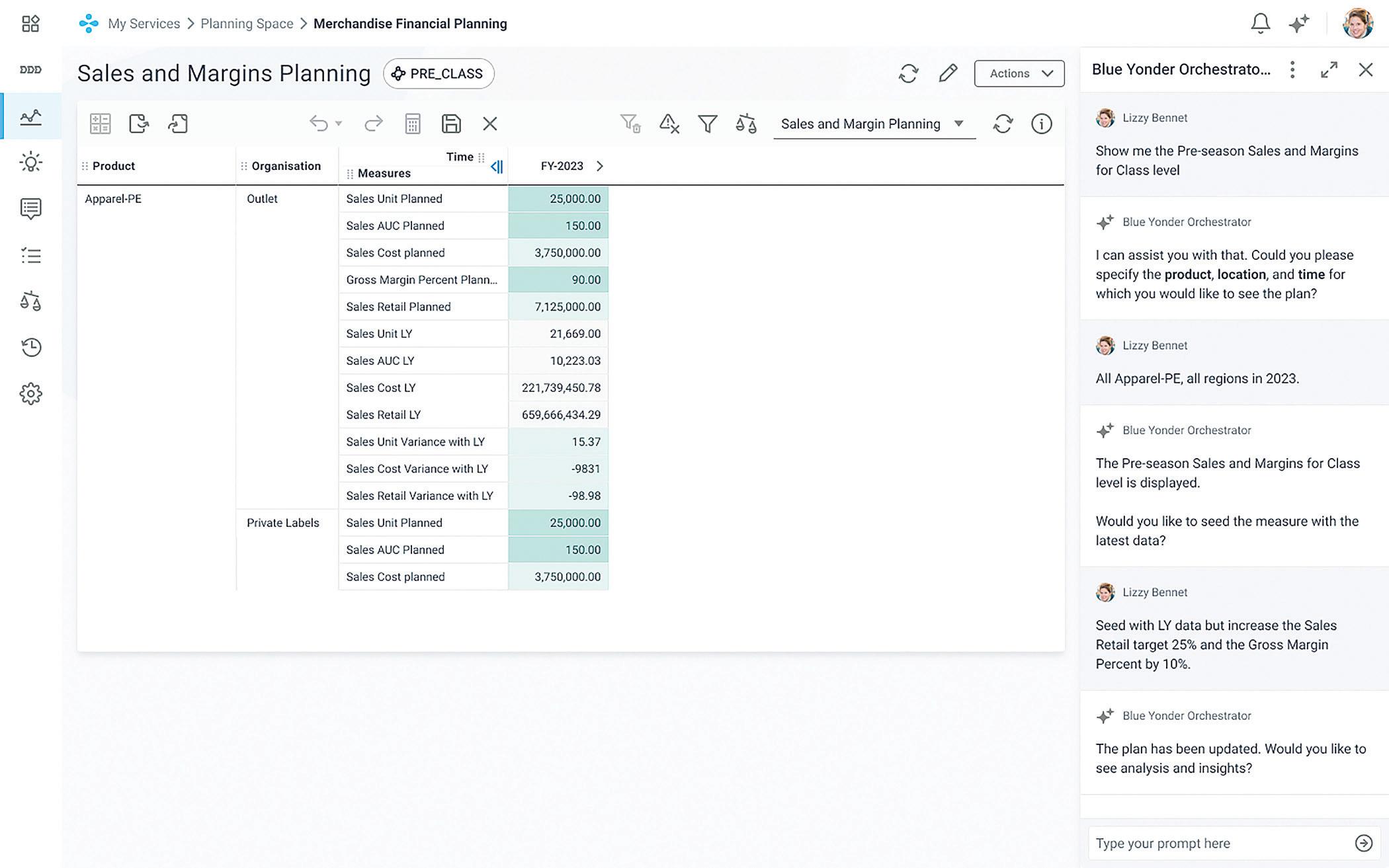
director, emerging technologies, Yale Lift Truck Technologies. “Plus, by adopting robotic lift trucks and other automation technologies, warehouses can reduce the risk of accidents and focus employees on more engaging tasks, ultimately increasing employee satisfaction.”
Warehouse automation also provides a means for companies to maintain productivity and efficiency levels while dealing with a reduced labor force, according to Sean Wallingford, president and CEO of Swisslog Americas.
“As the technology and ease-of-use continues to advance, many companies are seeing automation systems as a viable business option that lower operational costs,” adds Wallingford. “For instance, we recently introduced the next generation of our CarryPick mobile robotic goodsto-person storage and retrieval system, which offers high scalability with low operational costs. It features faster, more agile automated guided vehicles (AGVs) to increase performance levels and shorten the return on investment for customers. The system’s scalability enables companies to accommodate growth without
adding additional labor.”
New solutions
From providing predictive insights and real-time analytics to automating processes, plants and even some of the human interactions, these new solutions and technologies pave the way for more integrated warehouse automation.
Blue Yonder’s warehouse execution system (WES), for example, acts as the brain of the warehouse, synchronizing tasks and data and making AI- and machine learning (ML)-directed decisions, Jonkman says.
“It orchestrates warehouse processes, material handling equipment, and robotics in a centralized hub. Warehouse execution systems allow our clients to trial multiple automation technologies and determine which work best for their particular business mix without losing sight of their own business processes that make them unique. They can also quickly ramp up and down capabilities within the solution as they need them and interleave robotics automation with labor for efficient task management,” she adds. “The
speed of physical automation is picking up, but some studies indicate that about 80% of warehouses are not automated at all, making this an important competitive imperative.”
Blue Yonder’s yard management solution incorporates cameras, optical character recognition and ML to increase yard efficiencies and decrease detention and frustration, Jonkman adds.
Earlier this year, Blue Yonder launched its first set of interoperable solutions across the entire supply chain—from planning to warehouse, transportation, and commerce—to include always-on warehouse management.
And, the Blue Yonder Orchestrator is a generative AI capability that allows companies to fuel more intelligent decision-making and faster supply chain orchestration.
Within the last year, Softeon introduced upgrades to its WMS/WES solutions, “which includes robotic interfaces and other automation implementation options designed to address the growing customer investment and innovation in warehouse automation,” says Hoefflin.
Yonder 16 FOOD LOGISTICS | MARCH/APRIL 2024 www.foodlogistics.com COVER STORY continued
Blue
Blue Yonder’s Orchestrator is a generative AI capability that allows companies to fuel more intelligent decision-making and faster supply chain orchestration.



“Protecting the planet is important. So is protecting my business and getting the best value I can.”
The waste in your supply network is a measure of its inefficiency.
When you choose to use CHEP’s pooled pallets and containers, you become an essential part of one of the world’s largest circular economies. So you benefit from less unnecessary waste, with greater supply chain knowledge and experience – adding more value than anyone else could.
Expect more with CHEP.
See how


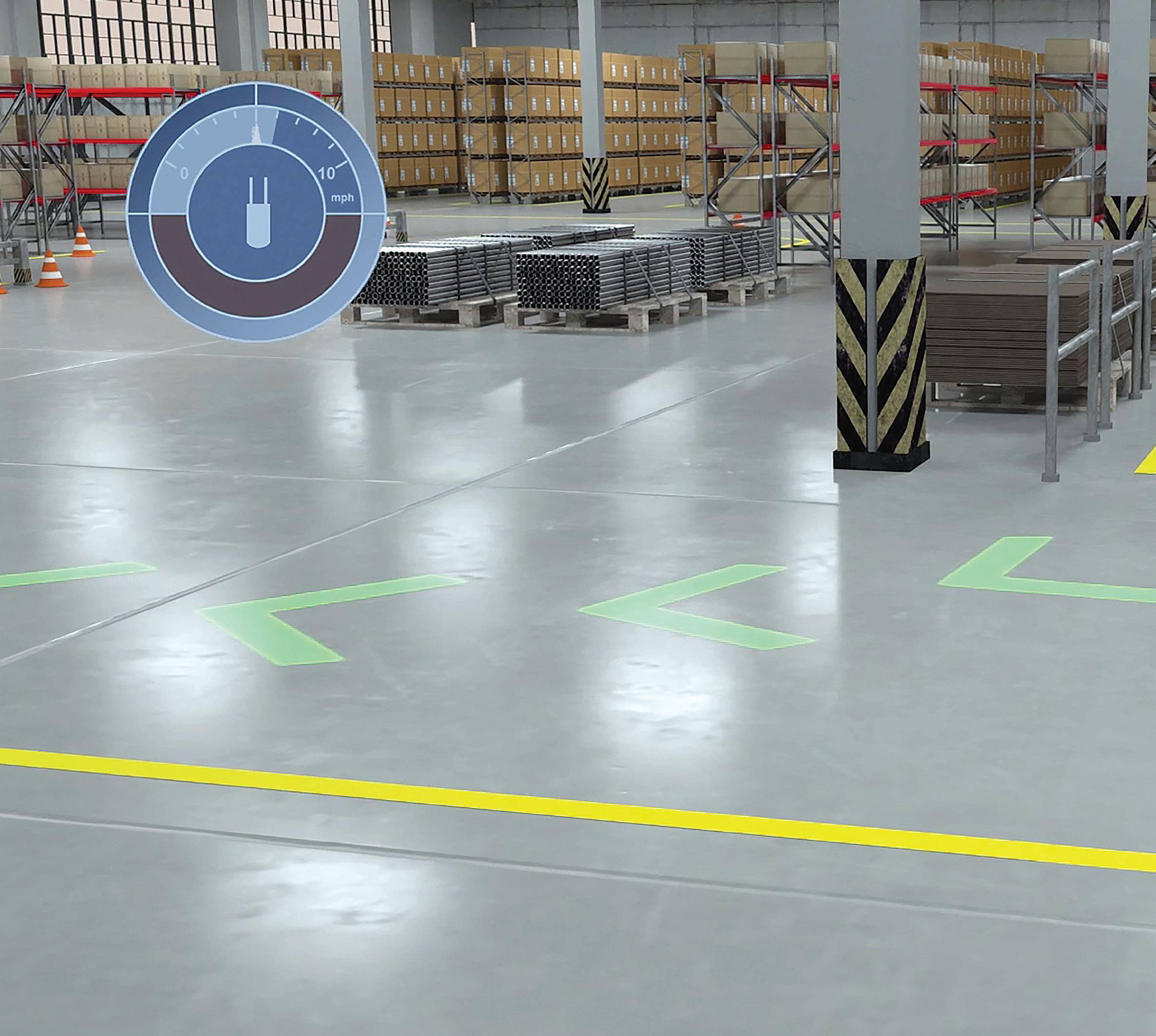
For example, Swisslog’s ACPaQ is a robotic and data-driven case picking and palletizing solution for store-ready order fulfillment, taking single-SKU inbound stock pallets, breaking them down to cases and building them back up into mixed SKU outbound order pallets.
Swisslog also introduced the latest evolution of its robot-based item picking system, ItemPiQ, designed for repeated, reliable picking of a wide range of items to fulfill fast delivery of orders at low operating costs, streamlining and improving the order picking process.
Every aspect of the system is handled within the Swisslog family of companies, from the vision camera to the robot and

the software. For reliable and effective operation in a complete Swisslog system, the robot cell can be fully integrated into the SynQ WMS.
“Artificial intelligence is making the warehouse of the future more dynamic, more agile, and more responsive,” says Wallingford. “The intelligent networking of machine, process and product information is a quantum leap for process optimization. For instance, AI enables robotics to self-learn from experience, which means that robotic picking ability improves over time with enhanced picking strategies for new products.”
Last year, Yale Lift Truck Technologies expanded its Yale Reliant advanced opera-
tor assist solution to now be available on 13 additional Yale lift truck models. The Yale Reliant solution uses multiple detection technologies to monitor the surrounding environment and the status of the lift truck and load. Yale Reliant automatically adjusts lift truck performance and constantly monitors truck and load status to prioritize stability as it implements hydraulic and traction controls.
For its part, in 2023, Zebra introduced ET6x Series tablets, featuring GenAI large language model (LLM) running on-board without needing connectivity to the cloud. Powered by Qualcomm Technologies, this tablet enables frontline workers to utilize a smaller on-device AI model.
18 FOOD LOGISTICS | MARCH/APRIL 2024 www.foodlogistics.com COVER STORY continued
Operator assistance technologies can include automation that helps improve safety in the warehouse while keeping a human operator in control of the lift truck.



“Automation provides most benefits in environment with repeatable, well-documented and predictable process flows,” says Luecht. “Availability of automation has become a key motivating factor, as it reduces non-value-adding steps (walking long distances), reduces repetitive stress injuries and removes tedious and manual operations. In some environments, the deployment of automation has become mission-critical as affordable labor is just not available.”
And, Tompkins Solutions partnered with Soft Robotics to deliver cutting-edge AI-powered robotics to logistics operations worldwide.
“Tompkins Solutions has been an early
adopter of feeding one robotics system with another. By combining different technologies we’re offering unique solutions to our clients’ needs,” says Latona.
Next steps
Whether your company is just beginning the journey toward implementing automation or still deciding on which solutions are best for your warehouse, one thing is certain—the warehouse automation boom is prepping cold food chains for anything and everything.
Case in point: If you’re not thinking about automation, you’re already behind, according to Waters.
“That being said, it’s important to
take your time. Reverse engineer your challenge. Identify the problem you want to address and then vet solutions that are proven to solve it. When you’re talking to vendors, ask to speak to users who look like you so you can follow the path of someone who has successfully addressed your same challenges,” Waters adds. “Expect to do a lot of research. There are many options out there, such as goods-toperson, picking robots, shuttle systems, VLM, AMRs and much more. You need a research team doing the math on all the possibilities. And be sure to find someone who has ‘gone before you,’ a company who had a very similar challenge as you and can speak directly to the results. Look at cost and production numbers before and after. What is the impact?”
Likewise, when a supply chain leader says they don’t have the people in place to do a lot of the necessary work, “they understand they have to cover that need with automation sub-systems, machine learning, large language models, and artificial intelligence that will learn and identify things,” says Hoefflin. “For leaders who are considering the implementation of automation, I tell them they must figure out their needs. Are they adding autonomous mobile robots and other hardware to do the work? If so, they need to integrate and orchestrate all of the work being completed by utilizing automated technology, like a WMS and WES. They need a platform for handling warehouse data and processes that enable orchestration across various devices and systems on the warehouse floor. For best success, they need a composable platform that provides a comprehensive bird’s-eye view of warehouse operations and enables data-driven decisions, so we know when we need to pivot if work becomes unbalanced or if we need to manage order fulfillment peaks, for example.”
Before you even start to consider specific solutions for your warehouse, perform a detailed evaluation of the entire operation to see which tasks would benefit most from automation, advises Hinnant.
“If you see certain processes that need to be sped up or are leading to particularly high operating costs, those processes
www.foodlogistics.com MARCH/APRIL 2024 | FOOD LOGISTICS 19
Yale Lift Truck Technologies



would be good candidates for automation. From there, it’s all about finding an automated solution that can help your operation improve that particular task,” adds Hinnant.
Companies should also always start with the data first.
“Getting a clear and exact identification of their critical paths internally, and then extrapolating those with volume and growth to a realistic future-state environment should be completely mapped out prior to even considering automation/robotics of any sort,” says Latona.

“Once they have a future-state destination to arrive at, they can explore a portion of their facility to automate. Jumping into a multi-million-dollar system from a baseline-type system can be disastrous and should only include those concepts that have been properly evaluated.”
Additionally, companies need to ensure that they’re complying with food safety and regulations.
“To do this, they need active quality control and the ability to provide visibility, inventory management and temperature monitoring,” says Jonkman. “Compa-
nies should also focus on implementing automation in ways that have the most impact on improving safety of employees and food, as well as quality efficiency. It’s also important to look for solutions that support sustainability efforts.”
“In the cold food chain, many warehouses are using ammonia-based freezer and refrigeration systems to reduce energy usage. There are also automated temperature tracking and control solutions that ensure cold food products remain at a safe temperature to prevent spoilage and waste,” Jonk-
20 FOOD LOGISTICS | MARCH/APRIL 2024 www.foodlogistics.com COVER STORY continued
Companies can now utilize automation and robotics to convert the more complex tasks to solve for the increasing labor shortage.
Tompkins Solutions


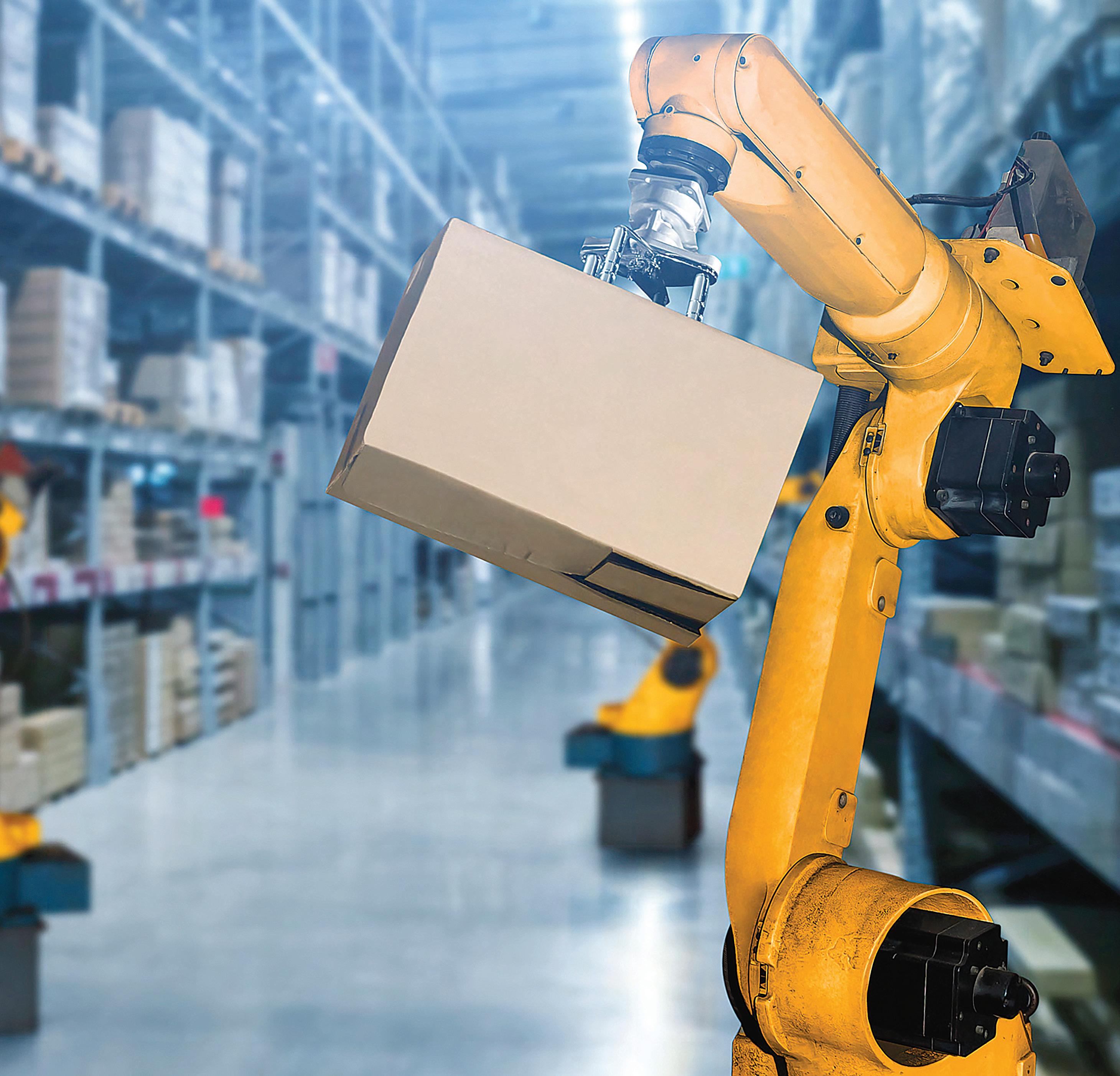
man adds. “There are opportunities to incorporate automation into the facility that can benefit overall operations. Each warehouse will also have its own physical aspects—like lights, cameras, conveyors, lifts, and HVAC equipment—that an automated solution can monitor to ensure the whole facility is running as efficiently as possible.”
All in all, thanks to a warehouse automation boom, the business case for warehouse automation has never been stronger and the return on investment has never been shorter, says Wallingford.
“The good news is that financial options are available today for moving ahead with warehouse automation,” he adds. “Nevertheless, organizations both large and small face a significant hurdle in securing the required capital, when advancing automation initiative. Previous systems would sometimes become obsolete before realizing any ROI. But the promise of performance and the ROI of new generation systems reduce the risk for financial services companies. There are a number of warehouse automation technologies available today—and more
coming in the future—and this can be overwhelming for organizations considering automation. But it also allows the technology to be precisely matched to the application.”
While 2024 is projected to be the year for major adoption and implementation of warehouse automation, these true problem-solving solutions are already in position to prep cold food chains for anything and everything.
www.foodlogistics.com MARCH/APRIL 2024 | FOOD LOGISTICS 21

STREAMLINING TRANSPORTATION MANAGEMENT STRATEGIES
Efficient transportation management is a cornerstone for success in the supply chain industry. As businesses expand and diversify, the need for effective strategies is critical; in transportation, it’s a necessity to optimize processes that can quickly become chaotic. Key solutions to address upcoming challenges come from a place of preparation, with options like transportation management systems (TMS) and Internet of Things (IoT) solutions to carrier collaboration and consolidation efforts. The significance of having a strategy that works for you is vital to the success of a modern third-party logistics (3PL) provider.
The main challenges of transportation management
Managing transportation efficiently involves overcoming rising fuel costs,
@scharfsinn86.stock.adobe.com
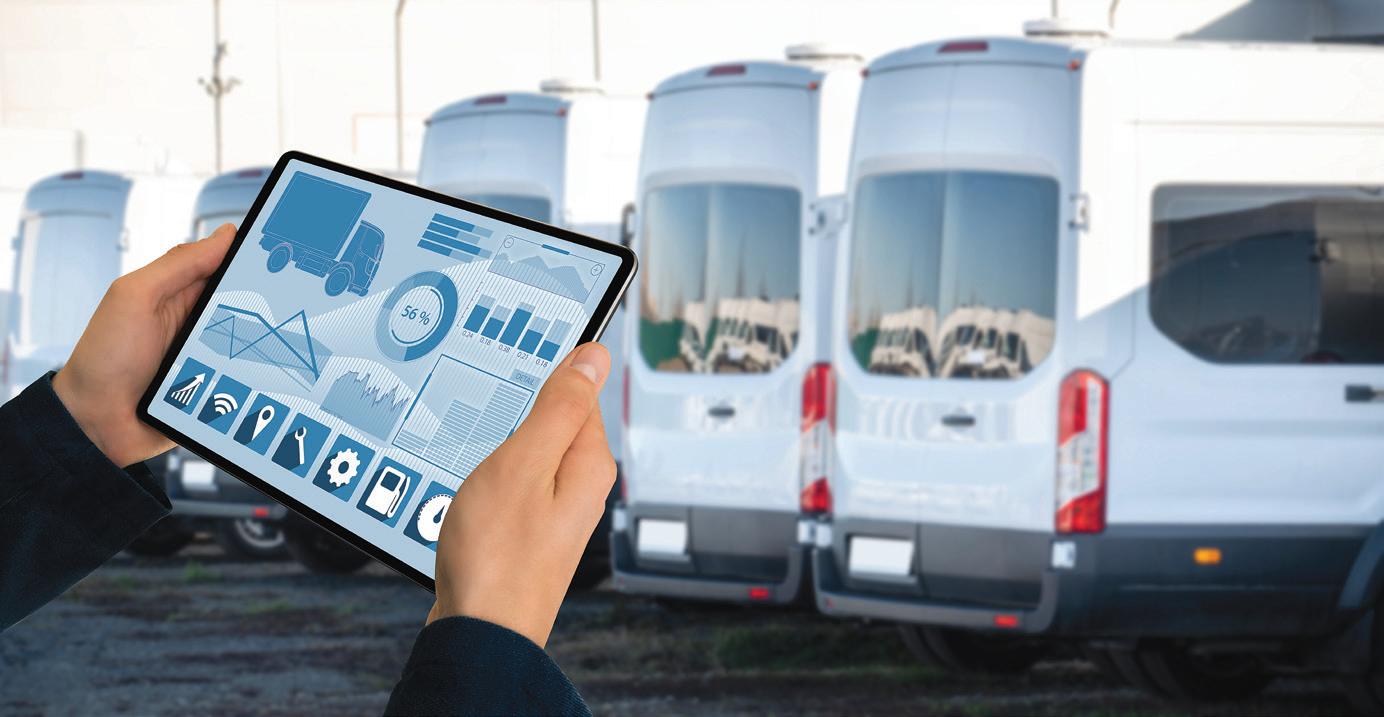
fluctuating demand, capacity constraints, regulatory compliance and the need for real-time visibility.
According to a study by AlixPartners LLP, revenues dropped 30% from a year earlier,
and EBITDA was cut in more than half over that period. Additionally, capacity is found to be on the rise, and consequently, rates are under downward pressure. The Red Sea crisis is adding to the usual challenges with
3PL/COLD CHAIN BY ALEXIS MIZELL-PLEASANT, MANAGING EDITOR 22 FOOD LOGISTICS | MARCH/APRIL 2024 www.foodlogistics.com @Bernice.stock.adobe.com
Truck carries cargo with digital connections for global management.
Digital tablet used for fleet tracking data.
disruptions involving weather, emissions and economic uncertainty always looming.
Jagan Reddy, managing director at NetLogistik, says long-term, sustainable and scalable solutions are needed.
“With the size and complexities of supplier networks, changing regulations and the growing number of transportation mode options, having a dynamic software solution that can manage and help make decisions is key component in any supply chain strategy,” says Reddy.
Transportation management strategies and solutions
Effective transportation management strategies encompass a range of approaches. Key components include route optimization, load planning, carrier selection, real-time tracking and performance analytics. By adopting these strategies, organizations can reduce transportation costs, minimize environmental impact and improve customer satisfaction—attacking the challenges at the source.
TMS has emerged as a comprehensive solution to address these complexities.
Nick Brown, director of transportation at enVista, explains that having a TMS often enables the organization to have a central transportation team, and a central team, coupled with the TMS, improves scalability by itself.
TMS algorithms analyze historical data and real-time information to identify the most efficient routes to minimize fuel consumption and reduce transit times. This leads to cost savings and improved delivery performance, which is most important when maintaining compliance in food logistics.
Brian Cupp, director of operations at IntelliTrans, says specific challenges for food shippers, ranging from regulatory compliance to the complexity of maintaining the quality and safety of perishable goods, create unique complexities where TMS can help streamline operations, monitor shipments, gauge performance and save money.
“Integrating a transportation management system unlocks real-time data and powerful analytics, empowering companies to make informed decisions and enhance their transportation operations. This enhanced visibility ripples through the entire supply chain, driving efficiency in several
ways,” says Cupp. “The wealth of data from multiple sources allows organizations to make data-based decisions. By analyzing trends and utilizing historical information, companies can pinpoint areas for improvement. For food shippers, it can involve optimizing processes, strategically selecting carriers, and implementing cost-saving pricing strategies. This translates to significant reductions in transportation spending.”
The visibility aspect, for food specifically, is where IoT jumps in. IoT sensors allow for improved quality control by monitoring temperatures and ensuring proper handling of perishables. Cupp says it offers early detection of any issues, like fluctuations in temperature or delays, allows for timely intervention and maintains the quality of food products.
Benefits of transportation management software and implementation
The benefits come from the modern features of modern technology. Whether it’s tracking locations of shipments, making data-driven decisions or crafting contingency plans through climate, traffic or equipment analytics, the realized power

@Shutter81.stock.adobe.com
Online fleet tracking of vehicles and cargo.

is efficiency ten-fold— now where do we start?
Adopting anything new is a process, and implementation for a fresh strategy requires strategy of its own.
Chris Schramm, director of sales and accounts at Nexterus, says data from existing systems needs to be migrated and integrated, which may involve cleansing and formatting the data to enable a successful data exchange.
“All stakeholders within different departments need to be involved in the training, testing, and integration to ensure everyone is engaged for a successful project. Change management strategies may need to be deployed to address any resistance to change and to ensure the successful adoption of the new technology,” describes Schramm. “Support mechanisms like help desks, documentation, and user forums can assist users
with any issues that may arise during the transition. Most importantly, monitor the performance of the new TMS to ensure it meets business goals.”
An implementation plan should be a next step after choosing whatever innovations, technologies or equipment set to streamline a transportation management practice. Cupp says this requires communication to work with a chosen vendor to create a comprehensive plan. It should include change management strategies, training programs, data migration and clear timelines for each phase. Ensure the plan minimizes disruption to your operations, potentially through phased rollouts like prioritizing LTL/TL carriers or conducting pilot tests with limited users, explains Cupp.
And when it’s all in place, take the time to measure and monitor. For a TMS, Reddy says it’s important to understand
what KPIs to monitor to confirm the TMS is delivering the results you desire.
“Cost per mile, cost per pound, average cost per unit, on-time delivery rate, average transit time, billing accuracy are all common measurements used by organizations to track TMS impact. As the old saying goes, ‘what you can measure, you can improve,’” says Reddy.
For a 3PL, transportation management strategies are indispensable for success. Software and technology have taken the sector by force, empowering organizations to overcome challenges and enhance efficiency. As businesses continue to prioritize streamlined logistics, the strategies and subsequent actions taken will undoubtedly play a pivotal role in shaping the future of transportation management.
3PL/COLD CHAIN continued 24 FOOD LOGISTICS | MARCH/APRIL 2024 www.foodlogistics.com
@monsitj.stock.adobe.com
Data coded by a computer.



This view doesn’t have to be so intimidating.











The market is flooded with new operators under intense pressure in a fast-paced warehouse environment. That inexperience and the complexity of today’s operations creates enormous safety and productivity challenges.
You deserve a lift truck supplier who understands how to engineer technology-enabled tools to help enhance awareness, reinforce operating best practices and address operational risks.
Visit Yale.com







MICRO-FULFILLMENT – FROM WAREHOUSE TO GROCERY STORE
People love food! Grocery distribution centers service retail stores and online customers, but as home delivery and store pick-up demands increase, the importance of store fulfillment continues to grow. An expanding strategy for accomplishing store fulfillment is the use of micro-fulfillment centers (MFCs), which fulfill consumer orders from the store with an automated system. Grocery stores are strategically positioned in populated areas to service local communities, so it makes sense to utilize these locations to service regional consumer online demand.
You can see this in-store growth by the number of grocery employees walking the store aisles with special carts, shopping for the consumer (in-store fulfillment). You can see this growth with the number of parking spaces allocated for grocery pick-up. This strategy is one of the lowest cost methods for providing online fulfillment from the grocery store. But, as online demand continues to grow, the in-store fulfillment strategy using employee shoppers may struggle to keep up. There needs to be a faster approach to fulfilling these consumer orders that removes shopper congestion from the store.
The alternatives include dark-store fulfillment (stores closed to the public and converted to fulfillment centers) and/or dedicated MFCs attached to or near existing stores. .
At the start of the MFC movement, existing stores leveraged their available space (in-store and dark-store fulfillment) or with store expansions for a dedicated MFC. Grocery retailers are looking to maintain pace with competitors by investing in automation in an attempt to reduce footprint and labor requirements while increasing the accuracy and speed of delivery. The growth of the automation marketplace is supporting grocers with their micro-fulfillment expansion plans.
There are many material handling equipment (MHE) manufacturing companies that develop technology specific for the micro-fulfillment space. However, the chal-

lenge for grocery retailers is deciding which site, application, and supplier are the best fit to satisfy their demand.
The micro-fulfillment site is determined by the availability of store expansion and/ or the ability to close stores. The space or footprint required depends on the number of products, product types, consumer demand, storage height restrictions and the technology utilized.
Developing a master plan is helpful when making these tough design decisions. The planning process involves collecting product and sales data to estimate the future online demand by store/region. These demand profiles define the product mix, amount of inventory, consumer order profiles, and transaction volumes. With demand profiles established, the space, equipment/technology, labor and investments alternatives are evaluated to identify the best technology concept, layout, and building size/shape. Evaluating multiple MFC technology options/designs drives the team to a working concept that can be justified and compared to a baseline (lowest cost approach to support the growth projections). The comparable baseline is likely fulfillment from a regional distribution center or manually
picking orders within the store.
The next step is to document the requirements and functional specifications within a well-documented request for proposal (RFP). These bid responses are based on using the supplier’s technology and include design details, pricing, lead times, and transition plans.
With all bids in hand, a well-informed decision can be made to select a supplier to execute the MFC plan. With partners identified, the journey begins with the supplier developing engineering design documents, creating control interfaces, and the eventual construction/implementation of the MFC.
The growth of consumers staying at home and buying food/merchandise online is not slowing down. Luckily, grocers have a wide range of technology and suppliers to move forward developing micro-fulfillment operations to satisfy the demand.
 NORM SAENZ partner and managing director, St. Onge Company.
NORM SAENZ partner and managing director, St. Onge Company.
26 FOOD LOGISTICS | MARCH/APRIL 2024 www.foodlogistics.com SECTOR REPORT WAREHOUSING
ABOUT THE AUTHOR @SVasco.stock.adobe.com
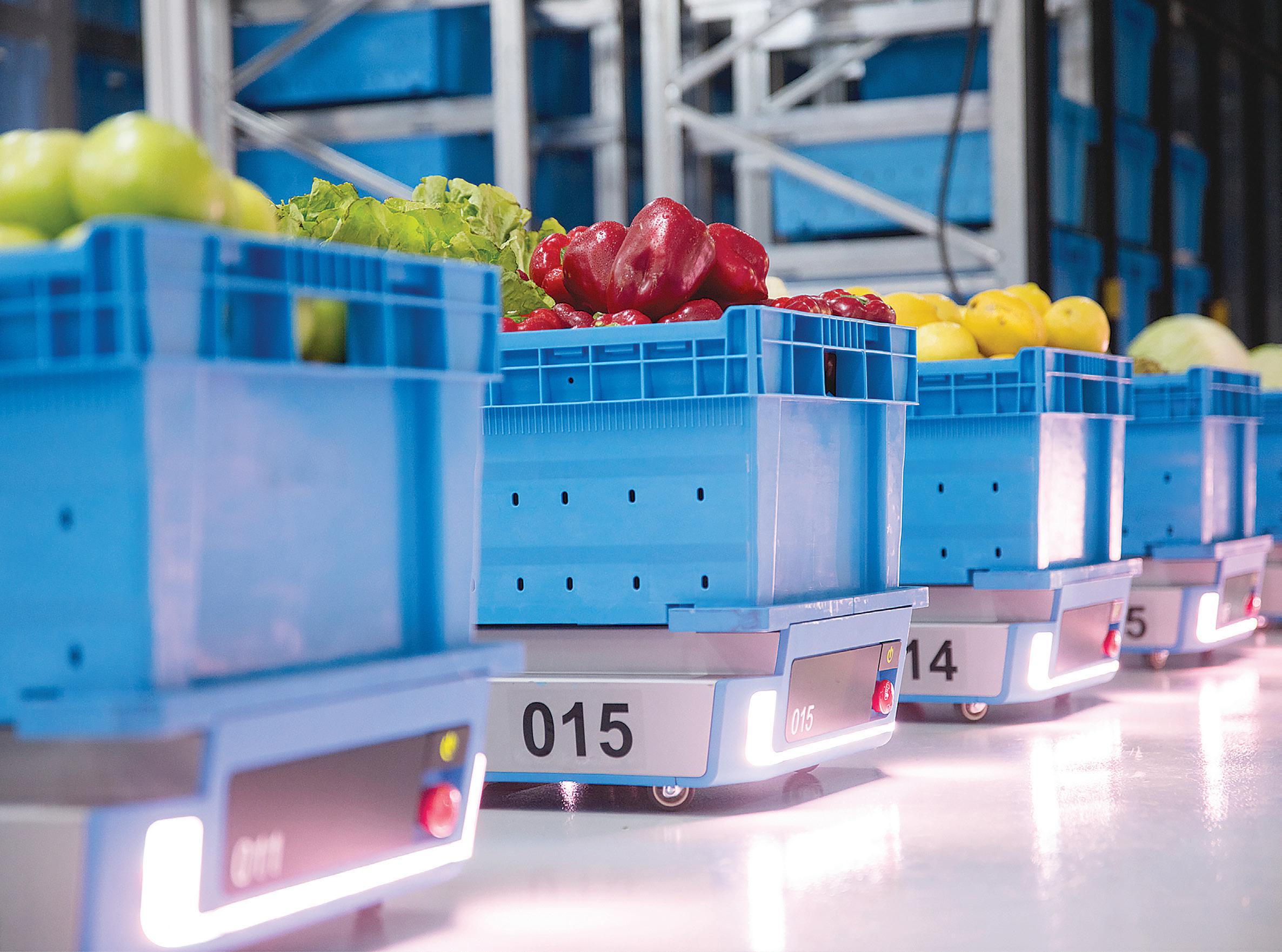
WHY THE IDEAL FULFILLMENT CENTER IS IN THE BACK OF YOUR STORE
For the past few years, stores have watched as shoppers shifted their preferences from in-person to online and back again. The future points to a hybrid model, one that combines instore and online purchase and delivery. Keeping up with customers’ shifting expectations can feel like chasing a moving target for retailers and grocers alike, but by nailing one aspect of the overall experience—fulfillment—businesses can delight customers, cut operational and delivery costs, and keep their operations flexible enough to meet any future changes.
The bar for creating an excellent fulfillment experience is high. A 2023 Shippo report showed that 62% of con -
sumers won’t purchase from a retailer without the promise of free shipping at checkout, while another found that 85% of consumers will not shop with a retailer again after a poor delivery experience. Perhaps it’s not surprising then that many retailers are struggling to meet these expectations. Less than half (49%) of retail executives agreed that their organizations were meeting customer expectations for order fulfillment.
Traditional online fulfillment models rely on massive remote warehouses to process orders, which are then transported to a local center, from where orders are finally shipped the last mile to a customer’s doorstep. The strategic, operational and financial acumen
needed to successfully pull that off while remaining profitable is a high bar to clear for most businesses. Surprisingly, the ideal fulfillment center might already be right under their noses, tucked away in the back of their stores. By leveraging existing space and automated storage and picking, stores can unlock a multitude of benefits.
Putting products closer to customers
In-person shopping frequently comes with its share of cluttered stores, long customer wait times, and inefficient workflows for the employees. Transforming the often inefficiently used square footage at the back of the store
SECTOR REPORT WAREHOUSING 28 FOOD LOGISTICS | MARCH/APRIL 2024 www.foodlogistics.com
Fabric
into a fulfillment center helps address those challenges. For retailers, having products in close proximity to the sales floor facilitates seamless inventory management and restocking, ensuring well-stocked shelves and optimal product availability.
It doesn’t take a lot of space to house an automated fulfillment solution. With robotic systems and vertical stacking, businesses can make the most of their available space, efficiently organizing and retrieving products for fulfillment purposes. A hyperlocal fulfillment center also drives down shipping costs and maximizes the store’s already hefty real estate investment without the need for expensive off-site warehouses.
Shipping from the store
By unlocking the ability to ship directly from a store location, retailers can offer more expedited shipping options. Sameday and next-day shipping become more
financially viable and even provide an edge over those online retailers that rely on centralized warehouses located far away from the customer’s location. By shipping from the store and tapping into their proximity advantage, businesses offer more efficient delivery services
Flexibility for multichannel shoppers
In its latest State of Retail & the Consumer report, the National Retail Foundation found that while consumers still enjoy the convenience of online shopping, growth is spurred by multichannel sales, where physical stores remain significant. Customers can browse and purchase products through various touchpoints, such as a website or mobile app, and have the option to pick up orders in-store or via curbside pickup. With a local fulfillment center at the back of the store, businesses can seamlessly integrate their online and

offline channels, enhancing convenience for the customer but also encouraging cross-channel sales and fostering a deeper connection between the brand and its audience.
The key here is flexibility, both in the sense of how to fit an efficient storage solution into existing real estate and how to adjust fulfillment capacity that scales as demand grows. Local fulfillment with high throughput and high-density automation enables retailers to unlock business value and serves as an important first step to building a resilient supply chain to accommodate ever-changing customer needs and behaviors.
ABOUT THE AUTHOR
 AVI “JACK” JACOBY CEO, Fabric.
AVI “JACK” JACOBY CEO, Fabric.

www.foodlogistics.com MARCH/APRIL 2024 | FOOD LOGISTICS 29 WWW.LOADTRANSFER.NET TRANSFER LOADS FROM ONE TYPE OF PALLET TO ANOTHER. Safer, cleaner and faster than other load transfer devices Enhance safety for warehouse personnel Category 3 safety compliant Helps meet FSMA, HACCP and GMP compliance Helps reduce contamination from entering production areas 1 800 628 4065 » » » » » FOOD SERVICE STORAGE IN STOCK –READY TO SHIP ORDER BY 6 PM FOR SAME DAY SHIPPING π COMPLETE CATALOG 1-800-295-5510 uline.com
THE CASE FOR PACKAGING SUSTAINABILITY IN FOOD AND BEVERAGE MANUFACTURING
Reduce. Reuse. Recycle.
It’s more than an adage. It’s the building blocks of environmentally responsible stewardship and gaining traction among food and beverage manufacturers.
According to a report by TraceGains, nearly 64% of food and beverage leaders acknowledged the importance of being environmental, sustainability, and governance (ESG) compliant. And almost 50% of all respondents said they’d be willing to stop production on a product altogether if it could not be produced in accordance with ESG objectives.
Despite the push for sustainability, many manufacturers face numerous challenges and feel they are falling short of achieving full ESG compliance. Among their challenges are:
• Increasingly complex supply chain
• Loose guidelines
• Fragmented goals
• Higher ingredient prices
• Lack of automation and technology
• Cost to invest
Trends in sustainability: Transformative packaging solutions for food and grocery industry
Approximately 91% of packaging waste ends up in a landfill.
Primarily driven by changing regulations, consumer demand, and pressure from competitors, sustainability initiatives are reaching beyond traditional measures and tapping into new sustainability pathways.
It is not just environmental factors or investor preference causing these transformative shifts; there are other drivers impacting the food and beverage industry:
• Regulatory compliance
• Need for cost savings
• Supply chain inefficiency
• Need for long-term resiliency
• Ways to differentiate from the competition

• Desire to reduce carbon footprint and waste output
• Health and safety measures
As a result, greener packaging processes are on the rise, and many food and beverage manufacturers are exploring packaging design improvements using reusable, recyclable and compostable materials.
For instance, sustainable materials like bio-based packaging with lower life-cycle emissions can significantly improve an organization’s packaging sustainability plans. Such innovations may include packaging made from barley straw and bamboo, recyclable wrappers and paper cushions, compostable or paper food containers, wine bottles made from recycled paper, starch-based polymer bagging, and recyclable beverage rings made from molded pulp.
Reusable packaging is another way to reduce waste.
Some packaging solutions use minimalistic designs that reduce material usage and allow items to be packed tighter and more efficiently.
Beyond material selection, automating packaging processes is another way businesses are reaching their sustainability goals. By automating packaging lines, manufacturers can increase production and efficiency, reduce waste, attain better data about operations, and improve the health and well-being of their employees. For example, a reliable packaging partner can help design solutions to use less packing material resulting in lower material and labor costs, lower freight costs, and higher sustainability metrics.
Automated solutions can improve packaging processes and reduce the need for human intervention in operations, a critical factor in a shrinking labor pool. What’s more, automating packaging production lines can reduce the occurrence of improper labeling, missing or illegible words or graphics, missing barcodes, use of improper packing materials, and inaccurate product weights. This can help eliminate errors, which increase shipping costs and carbon emissions.
These customized and automated solutions can be tailored to your business
SECTOR REPORT WAREHOUSING 30 FOOD LOGISTICS | MARCH/APRIL 2024 www.foodlogistics.com
@Nikita.stock.adobe.com
needs and increase production speed, enhance safety, and drive profitability for the business. Here are just a few examples of automated solutions for the packaging line:
Sustainable options for primary, secondary and end-of-line packaging
Primary packaging
• Poly-bagging equipment
• Package feeding and filling machines
• Checkweighers
Secondary packaging
• Case forming equipment
• Case packing machines
• Carton sealers
• Shrink Bundling
• Void fill and protective packaging solutions
End-of-line packaging
• Stretch wrapping
• Automatic palletizing
• Strapping solutions
Marking and coding equipment
• CIJ inkjet printers
• Thermal transfer printers
• Laser coding systems
• Print-and-apply labeling systems
• Handheld marking and coding
How manufacturers can overcome cost concerns in sustainability initiatives
The push for sustainability is clear. But so are the added costs incurred by the manufacturer, especially when it comes to placing new equipment or retrofitting existing equipment. To maintain profitability, food and beverage manufacturers must develop strategic sustainability transition plans focusing more on value creation and less on the initial investment costs.
As companies become more keenly aware of their businesses’ carbon footprint and its impact on the world, many also realize their current operations are costly, inefficient, and outdated. Ideally, they would receive assistance from their supplier partner who should be able to offer a line-by-line comparison of existing costs to operate compared to operational improvements.
Once manufacturers see their current
cost of doing business, they are often surprised by the hidden expenses associated with outdated or obsolete packaging processes. These often include:
• High energy consumption
• High number of trucks on the road
• Increasing landfill waste
• Increasing emissions
• Skyrocketing labor costs
• High number of rejects and reworks
• Inflated operating costs
Automating packaging processes reduces the need for manual intervention and addresses sustainability issues by reducing material waste and the number of defects. Additionally, automation helps manufacturers with labor shortages and production issues. Packaging material changes and adaptations can address food waste and loss reduction, preserve quality, and prevent contamination while minimizing the costs to ship, transport and store goods.
For example, a switch from manual to automated stretch wrapping systems of pallets for shipment resulted in significant annual savings for one manufacturer by saving 150 rolls of stretch film and reducing electrical use. It also decreased plastic waste by 750 pounds, carbon dioxide emissions by over 12,000 pounds and kept 715 pounds of paper waste out of landfills.
Automation enables predictive maintenance, keeping manufacturers online longer with better machine uptime, less unplanned downtime and predictable maintenance costs.
How suppliers can help food and beverage companies with sustainability
Improving one or two of these inefficiencies alone is enough to jumpstart sustainability initiatives. Making incremental operational improvements to packaging processes can streamline production, eliminate inefficiencies, and create a smaller carbon footprint.
However, that’s easier said than done.
In 2022, McKinsey & Company reported that an common factor challenging a company’s ability to achieve sustainability compliance are the out-of-date
technical requirements for packaging designs that have carried over from earlier-generation products.
Every company has very different operational needs. Manufacturers are encouraged to work with a supplier that takes a consultative approach for their procurement needs. The ideal partnership would address both sustainability and profitability by evaluating business needs, performing a detailed equipment, material and application analysis, detecting inefficiencies, and then fine-tuning solutions that meet the complexity of the operation and plans for continuous improvement. Often, solutions that address sustainability also improve the company’s bottom line.
Sustainability can be more easily achieved when working with a dedicated supply partner who:
• Has packaging experts who work closely with plant engineers and operations managers to analyze the entire production line to identify bottlenecks and areas for improvement.
• Ensures product is appropriately packaged and marked for consistent and reliable delivery to customers.
• Has an extensive network of suppliers to help identify solutions that meet strict chain-of-custody, sanitation, and FDA standards commonly required in the food and beverage industry.
• Considers product quality and customer satisfaction in all recommendations.
• Monitors and measures progress. Investing in sustainability initiatives just makes sense, both environmentally and economically. Companies that promote sustainability throughout their operations will be better positioned to succeed and compete in an environmentally conscious marketplace.
ABOUT THE AUTHOR

MAUREEN WEINCOUFF channel development manager, packaging equipment and materials, LINC Systems.
www.foodlogistics.com MARCH/APRIL 2024 | FOOD LOGISTICS 31
THE ROLE OF MEDIUM-DUTY EV TRUCKS DURING PEAK SEASONS
Produce season is in full swing and peak beverage shipping is right around the corner, meaning more trucks will be delivering goods to stores at record levels.
Many of the vehicles powering this influx of deliveries are medium-duty, a category that uses over 8 billion gallons of fuel a year, accounts for 26% of greenhouse gas (GHG) emissions in the transportation sector, and falls only second behind consumer cars.
All last-mile food deliveries should be made with electric vehicles (EVs) sooner rather than later. So, the big question is, why aren’t we there yet?
Elevated payload and weight concerns during peak seasons
The food and beverage supply chain often requires a greater payload than small vans can handle, especially during peak produce and beverage seasons. Many shippers are in need of established vehicles that can service 2- to 6-ton payloads with the same reliability and an even better driving experience than traditional internal combustion engine trucks.
That’s where medium-duty EVs come into play. Today, battery and technology innovation has made it possible for Class 4-6 trucks to increase their payloads and driving ranges, carrying 2-6 tons up to 200 miles per charge, which is enough for 95% of urban and suburban daily routes.
Electrifying medium-duty vehicles enables shippers to unlock zero emissions and quieter operations, while still handling the payload and providing the same grocery storage capacity.
It takes a lot of energy to keep refrigerated goods cold
On top of payload confidence, drivers are also riddled with range anxiety, which is exacerbated when moving refrigerated goods that take a lot of energy to keep cold.

The North American Council on Freight Efficiency (NACFE) determined that medium-duty box trucks are an ideal fit for electrification due to their shorter distances and return-to-base operations.
Plus, the rise of more efficient, high voltage refrigeration solutions enables food companies to run refrigerated EVs efficiently and with only a 5-10% impact on the range the vehicle can run on a single charge. With cooling and pre-cooling solutions for box truck designs, trucks can maintain proper temperature with minimal draw on the vehicle’s EV battery.
Medium-duty’s role across the cold food supply chain
By electrifying medium-duty step vans and retail goods vehicles, everyone wins— consumers, shippers, and drivers alike.
For one, consumers are increasingly in favor of more sustainable shipping methods. In a study from Digital Commerce 360, 69% of consumers said sustainable shipping has influenced their past purchases, while 76% say they would pay an extra 5% for more sustainable shipping.
Shippers who electrify their fleets not only win the favor of more sustainably-minded shoppers, but also set themselves up to meet rapidly approaching EV regulations. With zero-emission fleet requirements from states like California and nationwide goals set by the U.S. government, funding incentives are up for grabs for companies looking to meet dead-
lines. Likewise, medium-duty fleets that go electric also position themselves as leaders in sustainability. If we achieve 100% new medium and heavy-duty EVs sales by 2040—a goal set by the Biden-Harris Administration—Americans would save up to $27 billion annually in pollution benefits and $485 billion cumulatively by 2050.
Drivers will appreciate their companies making the move to electric, too. These vehicles are their office, their sales storefront and their break room. Imagine how much better their day can be when the truck isn’t noisy, vibrating, baking with heat and spewing unsafe fumes.
Ultimately, the environment will reap the greatest benefits of the shift to electric medium-duty vehicles. In fact, the Environmental Defense Fund uncovered that if we eliminate tailpipe pollution from medium and heavy-duty EVs by 2040, we’ll avoid 224 million metric tons of GHG emissions every year. By building trucks with the most advanced electric batteries and motors, we can bridge the gap between the future of a fully electrified world and the need for clean and efficient transportation.
ABOUT
 JIM CASTELAZ
founder and chief revenue and technology officer, Motiv Power Systems.
JIM CASTELAZ
founder and chief revenue and technology officer, Motiv Power Systems.
stock.adobe.com
THE AUTHOR @ scharfsinn86
32 FOOD LOGISTICS | MARCH/APRIL 2024 www.foodlogistics.com SECTOR REPORT TRANSPORTATION
RELYING ON 3PLS IN A FLAT MARKET
The supply chain industry is currently experiencing a flat market landscape. In such times, when market growth stalls, the need for dependable and efficient transportation solutions becomes more crucial than ever for shippers. This is where the role of third-party logistics (3PL) providers comes in.
A reputable 3PL becomes the guiding light for shippers in flat market conditions, offering a comprehensive suite of services designed to prioritize reliability and service quality and mitigate the driver shortage.
For shippers navigating through a flat market environment, the focus needs to shift on a strong and reliable supply chain. This is where the expertise and capabilities of a reputable 3PL come into play. By leveraging expertise and success in developing new customer relationships and expanding into new lanes, 3PLs offer a level of service that goes beyond mere transactional interactions. They offer consistency, dependability, human involvement during unforeseen challenges, along with 24/7 support whenever you need it.
One of the primary advantages of partnering with a trusted 3PL lies in their ability to maintain a keen focus on on-time pickups, deliveries, and transit times. By closely monitoring shipments in real-time and identifying potential delays, 3PLs mitigate risks and ensure the smooth flow of goods from origin to destination. Moreover, by reusing carriers and leveraging industry insights, they help build a network of reliable partners, fostering mutual growth and sustainability for all.
Furthermore, by offering a “no-fail” service model, where every load is guaranteed with capacity, 3PLs instill confidence and peace of mind in their customers. This assurance reflects their unwavering commitment to delivering results, every time. They help shippers diversify capacity, which is crucial in cyclical markets.
A driver shortage can lead to capacity constraints, delayed deliveries, and increased costs, posing considerable hurdles for shippers. Experienced 3PLs strengthen a shipper’s supply chain through their extensive networks of carriers with a wide range of equipment, allowing 3PLs to cover any load, no matter the demand. By leveraging

In a flat market, the true value of partnering with an experienced and reputable 3PL lies in their ability to provide reliable, efficient, and personalized service on every load. 3PLs empower shippers to navigate through flat market conditions with confidence and resilience, ensuring the uninterrupted flow of goods and the sustained success of their businesses. @
these networks, shippers access flexibility in various capacity options in securing transportation for their freight. A main advantage of 3PL carrier’s networks is the reputable and dependable carriers included within this group. A strong network is made up of seasoned and professional carriers who can handle any disruptions and unforeseen challenges that may happen out on the road. They have long-standing relationships with 3PLs and have proven their expertise and dependability by successfully delivering freight and exceeding 3PL and customer expectations every time. By also tapping into a broad spectrum of carriers, 3PLs can optimize routing and minimize transit times, mitigating the effects of the driver shortage. It’s important to partner with an experienced 3PL that knows the shifts of the market and can leverage and lean on a powerful carrier network on a moment’s notice.
In addition, leading 3PLs distinguish themselves by providing personalized support and around-the-clock assistance. With 24/7 operational teams and dedicated points of contact, they ensure seamless communication and rapid resolution of issues, especially during nights, weekends, and holidays. An issue may occur during weekends where it’s almost impossible to find a person on the phone to help mitigate the situation. Having someone to speak to when there’s an unforeseen disruption allows for carriers to
have a team behind them every mile driven, from pick-up to delivery. This human-centric approach sets 3PLs apart from other brokerages that may rely solely on automated solutions.
In today’s digital age, where fraudulent activities pose a significant threat, top 3PLs employ dedicated fraud prevention teams to safeguard against potential risks. By conducting thorough verification processes and employing multiple-factor authentication measures, they ensure the integrity and security of each load, every time. This proactive approach protects shippers from potential losses and instills confidence in the reliability of the services provided.
KARL FILLHOUER VP of sales, Circle Logistics ABOUT THE AUTHOR

iQoncept stock.adobe.com
www.foodlogistics.com MARCH/APRIL 2024 | FOOD LOGISTICS 33
BY ALEXIS MIZELL-PLEASANT, MANAGING EDITOR

ARMS OF STEEL: HOW ROBOTICS AND WEARABLES ADDRESS LABOR SHORTAGES
Technology has become an extension of us. Phones never leave our hands and now we can possess extra arms with the recent introduction of Apple Vision Pro, allowing us for example, to cook while reading a virtual cookbook—no added limbs needed. In the warehouse, robotics are also extending a helping arm to fill labor gaps. For instance, a report from Descartes Systems Group found that nearly 76% of the supply chain and logistics leaders surveyed are experiencing notable workforce shortages in their operations, and what’s more,
37% of respondents would characterize the resource shortage as high to extreme. Autonomous robots are taking on repetitive and physically demanding tasks.
A freezing halt to labor
In the frozen food sector, where working conditions can be harsh, robots are proving to be invaluable. Many of these systems operate flawlessly in sub-zero temperatures. This ensures the seamless movement of goods within cold storage facilities. Automated guided vehicles (AGVs) and
robotic arms navigate through freezer aisles, retrieving and transporting products with precision.
In a tour with Ocado Intelligent Automation at Manifest Las Vegas, Mark Richardson, CEO, explained the process of its Ocado Storage and Retrieval System, specifically, the options for use in cold storage that help fill the gaps in worker shortages and in capacities where human workers might not want to work. He described how temperature-controlled storage can hinder human workers, requiring them to take breaks for
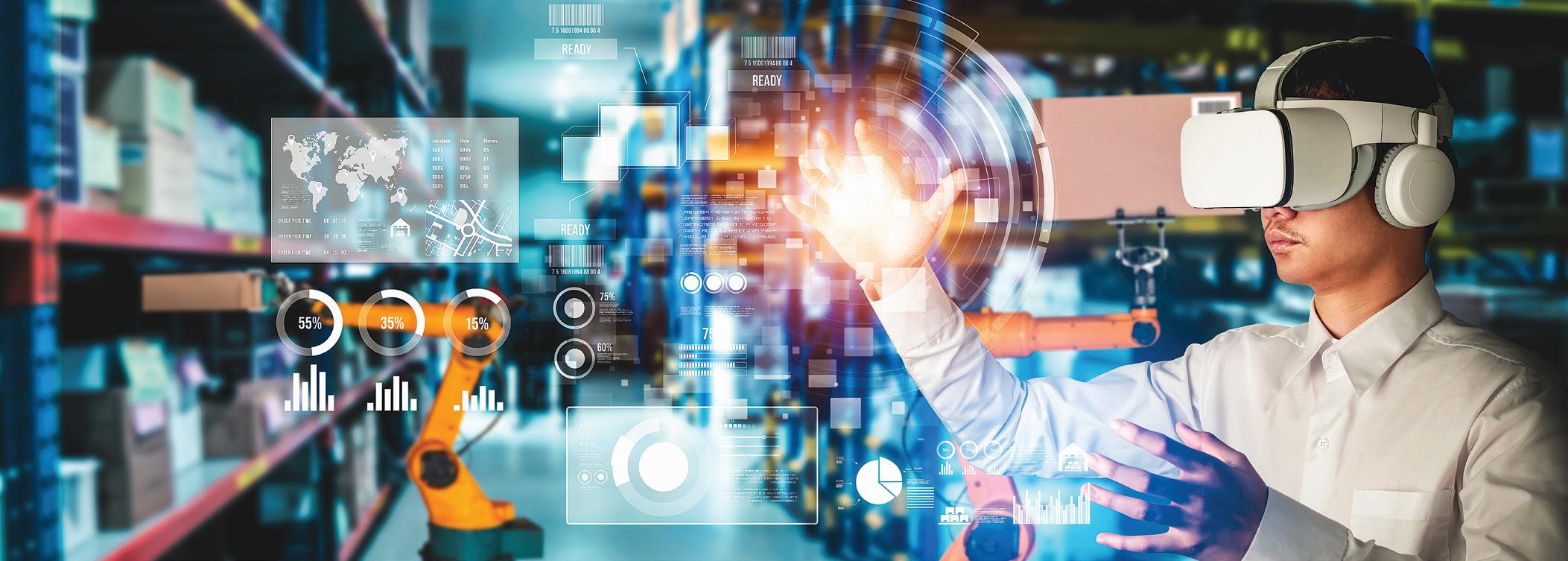
34 FOOD LOGISTICS | MARCH/APRIL 2024 www.foodlogistics.com SECTOR REPORT SOFTWARE & TECHNOLOGY
amorn .stock.adobe.com
@
Industrial robotic arm and human worker.
.stock.adobe.com
@ Summit Art Creations
Smart technology being used in a warehouse.
their own safety. This is where robotics has a niche need to operate in stride with the human workforce.
Automation not only addresses the challenge of finding human workers willing to endure extreme temperatures but also significantly reduces the risk of injuries associated with working in such environments. Heather Chapman, head of ergonomics at Soter Analytics, says employers must empower workers with tools to understand their movements and individualized safety risks.
“After all, all bodies are different. There’s plenty of technology, like computer vision or wearable sensors out there that can help employees understand how they are increasing their risk of injury before they get hurt. This is an easy way to give employees more oversight when it comes to how they’re moving their bodies on the job, without making them feel psychologically unsafe,” explains Chapman.
Collaborative robots, or cobots, are working alongside human employees, enhancing productivity and streamlining workflows. In tasks like order picking and packing, cobots contribute to increased accuracy and speed, mitigating the impact of workforce shortages once again.
ABB describes how industrial cobots are bridging the gap by providing ease-or-use for those non-robotics specialists. This is key when considering the introduction of technology to a workforce that may not be in the midst of upskilling yet.
Dave Food, head of product supply chain at Board International, predicts that in 2024, supply chain companies will need to reevaluate training and upskilling strategies, as the shift from manual to digital fulfillment continues to accelerate.
Where wearables come in Wearable technology is another innovation transforming the warehousing landscape. From smart glasses to exoskeletons, wearables are enhancing the capabilities of human workers and making the job more appealing in challenging environments.
According to ProGlove research, over half (56%) of warehouse and logistics leaders are currently utilizing industry wearables to improve efficiency in the warehouse.
“The potential is huge for human-machine

collaboration,” says Stefan Lampa, CEO of ProGlove, “Undoubtedly, the number of organizations relying on automation will increase in the coming years. It’s an enormous undertaking that will bring with it a significant change in people’s work. However, there are many different boxes to be ticked in a warehouse’s total operations. As a result, the mental acuity, agility and problem-solving skills human workers provide will have a significant part to play for years to come. Over the next decade, connecting those human qualities with the power of automation technologies will be a key part of success.”
Smart glasses, for example, provide real-time information to warehouse workers, improving order accuracy and reducing errors. In food, where climates might mean a worker needs to wear thick gloves, voice-activated commands through smart glasses can improve communication and task execution.
Brian Calus, director of sales at Vuzix Corporation, says smart glasses allow technicians to tap into an unlimited set of resources by communicating their situational point-of-view with remote experts and receive instruction, in real-time, to solve issues in the field.
Another way technology is empowering workers and acting in a collaborative fashion is in the introduction of wearable exoskeletons. These support warehouse employees by reducing the physical strain of lifting heavy items. In frozen food warehouses, where products are often bulkier and heavier, exoskeletons help alleviate the strain on workers’ bodies, improving
both efficiency and well-being. And digging deeper, technology isn’t just in the suit but behind the data and analytics needed to test and track environments, strain and the use of the product.
For example, Verve Motion introduced Verve Logic, a software and data analytics platform that integrates into its wearable robotics SafeLift exosuit to pinpoint critical areas that pose injury risks to industrial workers as they work. Christopher Buck, head of product at Verve Motion, says there is measurable impact on the world through the use of these technologies and functions.
“The real-world impact of this technology stems from the exosuit’s dual function: it not only protects workers from injuries by supporting their bodies during ergonomically risky lifts but also lessens the effort needed for all lifts, including those considered ‘safe.’ As a result, workers can return home to their families unharmed and with enough energy to enjoy their lives outside of work,” explains Buck.
Nearly 42% of respondents in the ProGlove research are certain they will invest in industrial wearables to improve warehouse operations in the next five years. Meanwhile, less than one-quarter are currently using full automation. Whether it be through robotics, wearables or a combination of both, technology is revolutionizing the warehouse sector. As technology continues to advance, the joint effort between human workers and these innovative solutions is offering safety, security, assistance and longevity to the future of warehouse advancement.
www.foodlogistics.com MARCH/APRIL 2024 | FOOD LOGISTICS 35
@ gorodenkoff .stock.adobe.com
Worker wears an exoskeleton to assist.

“USE YOUR EXISTING ASSETS”MAKING EXISTING DISTRIBUTION CENTERS FIT FOR THE FUTURE IS SUSTAINABLE AND PAYS OFF!
“Sustainability” is facing a paradigm shift. New commercial property is limited. Brownfield and retrofit projects are becoming increasingly important. True to the credo „Use Your Existing Assets“, there are good reasons to make existing logistics networks fit for the future as part of an end-to-end change strategy and thus save money and time. And WITRON is the ideal lifetime partner for precisely this task. WITRON has proven in numerous projects all over the world that the integration of new technology into an existing building can be successfully realized – during ongoing operations, on time, and without affecting deliveries to consumers.

SUCCESSFUL BROWNFIELD / RETROFIT STRATEGIES IMPLEMENTED END-TO-END www.witron.com
General contractor for the design, implementation, and operation of storage and order picking systems for retail business and industry.




























































































 NORM SAENZ partner and managing director, St. Onge Company.
NORM SAENZ partner and managing director, St. Onge Company.


 AVI “JACK” JACOBY CEO, Fabric.
AVI “JACK” JACOBY CEO, Fabric.




 JIM CASTELAZ
founder and chief revenue and technology officer, Motiv Power Systems.
JIM CASTELAZ
founder and chief revenue and technology officer, Motiv Power Systems.






